Even when conditions are flat, and nobody is seasick, there is something about passage sailing that seems to immediately sap your energy.
We had 460 miles from Nuku-Hiva to Rairoa Atoll in the Tuamotus, which meant a four-day passage. Forecast was light winds on the beam for day one, lighter winds dead downwind for day two, no wind for day three, and light headwinds for day four.
So, day one, mainsail and jib on a light reach.
I read Two Against Cape Horn years ago, but recently found it in a giveaway pile so decided to read it again. The book makes me want to cruise in Chile and Argentina, but does NOT make me want to sail around Cape Horn. I like to think that Ali and I are a couple of big strong adventurers, but when I read sailing accounts like these from back in the 60/70s I’m not at all sure that we could have done it. It’s amazing how much technology has changed sailing.
You can always tell what poor/lazy sailors we are by our sail’s telltales. For those who don’t know sailing, that skinny blue piece of fabric connected with the dot should be flowing straight backwards.
Clouds seem to be exploding out of Ua Pou as we sail past and night approaches.
Thirteen knots of wind slowly easing behind us, but with little rainstorms in every direction.
I was sitting up on the trampolines with the kids watching the big Parasailor floating over us when Lowe said, “I bet it looks weird from in front of us.”
I thought, yeah, I bet it does, and I jumped up to get the drone. We were moving really slowly so I just set it on the roof to take off. As I was about to launch it Lowe asked, “Isn’t it going to hit the Starlink?”
“No, it will pop up way higher than that.”
Whrrrrrrrrrr, crash, splash. Lowe was right.
That’s the second drone I’ve committed to the deep blue. The bummer isn’t so much the money, it’s the fact that we’re about to visit some of the most beautiful spots in the world and I have zero chance of a replacement drone any time soon.
Another sunset, this one with less rain on the horizon around us.
The wind eventually disappeared completely. We dropped the Parasailor and left it on deck hoping we might get a bit more wind at some point, but that never happened. Long windless day of motoring, which was helpful for making water, and doing laundry. First time being able to catch up on that in a while.
Fish on. I was surprised to see the line go taught with us motoring along at just 4.5 knots. Fish usually don’t get too excited by a squid wiggling along at such a slow speed.
As I pulled it in I was hopeful we might have a mahi mahi this time. As it got closer I could tell that wasn’t what it was. By now the whole family was behind me crying out, “Oh, poor thing. It’s okay, baby, we’ll let you go! Pat, don’t hurt him! Oh, geez, he’s going to die! Murderer!!!!!” Something very similar to that, anyway. So, while a shortbill spearfish might be good eating, there was no way this family was going to be down with that.
Fortunately, as I pulled him up alongside I was able to grab the hook with the pliers on the first try. A second later he was free and we were able to watch him float back for a second and then shoot off. We presume he went out and told all his friends, mahi mahi included, “DO NOT eat the pink squid, it’s a trick.” I didn’t get another bite.
A lazy day underway. No wind despite all the clouds.
Seems like every time the sun goes down it has to leave rain clouds looming ahead of us.
Ali and Lowe taking one last look around before heading off to bed. I take the first shift at night, which really requires nothing more than peeking around every twenty minutes or so to be sure we aren’t going to run into anything. That’s usually about 8:30-11. Ali takes 11-2. I take 2-5. And then I sleep from 5 until whenever. It’s enough sleep that neither of us feels all that tired, and we’re able to just let the kids get a full night. They sleep great through pretty much any conditions.
Today Lowe said, “We should just keep going.” He was happy because he hadn’t gotten seasick on this passage, and he was enjoying the conditions. Both kids are pretty content with days at sea. A good sign, because the Pacific is a long way from finished, not to mention all the other big oceans to cross.
Full-moon, or near-full, nights at sea are my favorite. It’s so bright that you don’t get nearly as many surprises as you do on the dark nights.
Waking up to more windless conditions. Motoring with one motor at a time, making 4.5-5 knots of boat speed and burning, I think, .5-.7 gallons of diesel per hour. We carry about 130 gallons on this boat.
A very light ripple of wind starts up, but now it’s nearly on our nose.
Night sets in and we’ve got about 15-20 knots now blowing 30 degrees off the bow. This is the first real headwind situation we’ve had on this boat since leaving Mexico. We have the main and jib up, but keep an engine running because we have to time our arrival at the Raroia Atoll’s pass for slack tide. If we don’t make it by 10 a.m. we could end up needing to wait another 24 hours for the next morning’s slack tide.
Waking up with about 30 miles to go and still not great conditions. The sailing/motorsailing is fine, but we really need some sunny skies to be able to navigate across the atoll once we get inside. Inside the atoll are bommies, which are coral heads that shoot up almost vertically from over 100 feet deep straight up to the surface. You can only see them clearly when the sun is shining on them.
Looks like we may get lucky. We’re both on time, and the storm clouds are moving away and leaving blue skies behind.
Just a couple miles out now. Gray skies and rain still lingering.
We pulled up in front of the pass a little before slack tide and we could clearly see the outgoing tidal flow. Seas were flat, though, so there weren’t really any big standing waves in the pass. We probably could have gone through, but we just waited right outside and watched. We’d be able to see pretty clearly when the slack tide hit.
As we waited, these two swam up and just floated in front of us. Usually, dolphins only join us when the boat is moving, and they can play in our bow wake. This was new to us. The one just rolled onto his back and laid there like he was sleeping, or like he was expecting someone to come rub his belly.
At slack tide we motored through the pass and headed the six miles across Raroia Atoll to tuck in behind our choice of little islets (motus). Not the nicest passage, and a bit of a fuel burner, but when the anchor dropped nothing had been broken and nobody had puked, so I’d call it a success. From here it’s just short hops from one atoll to another throughout the Tuamotus Archipelago.

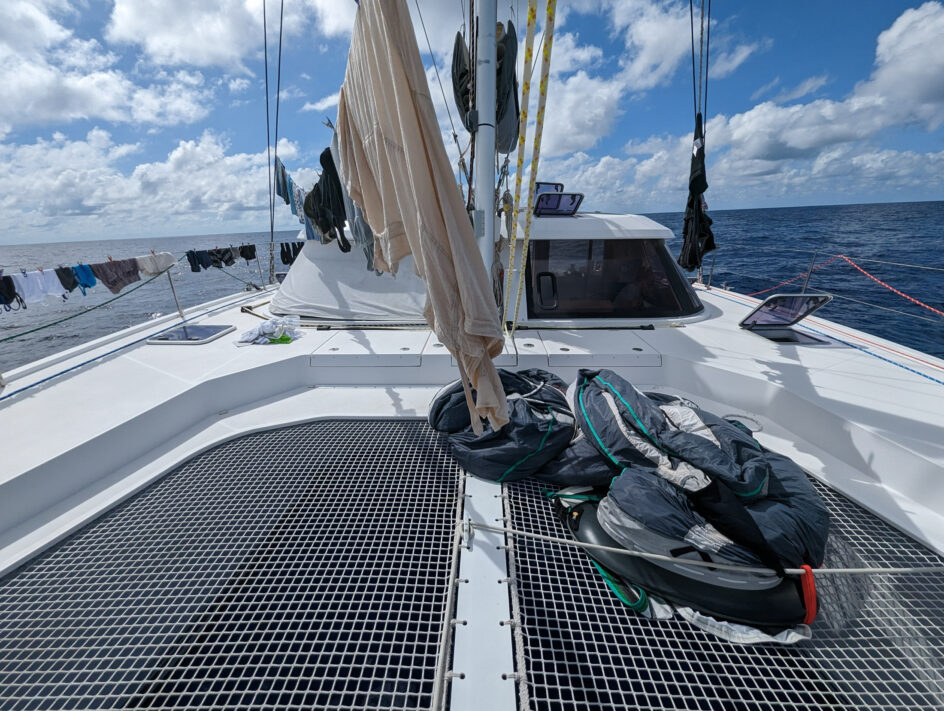
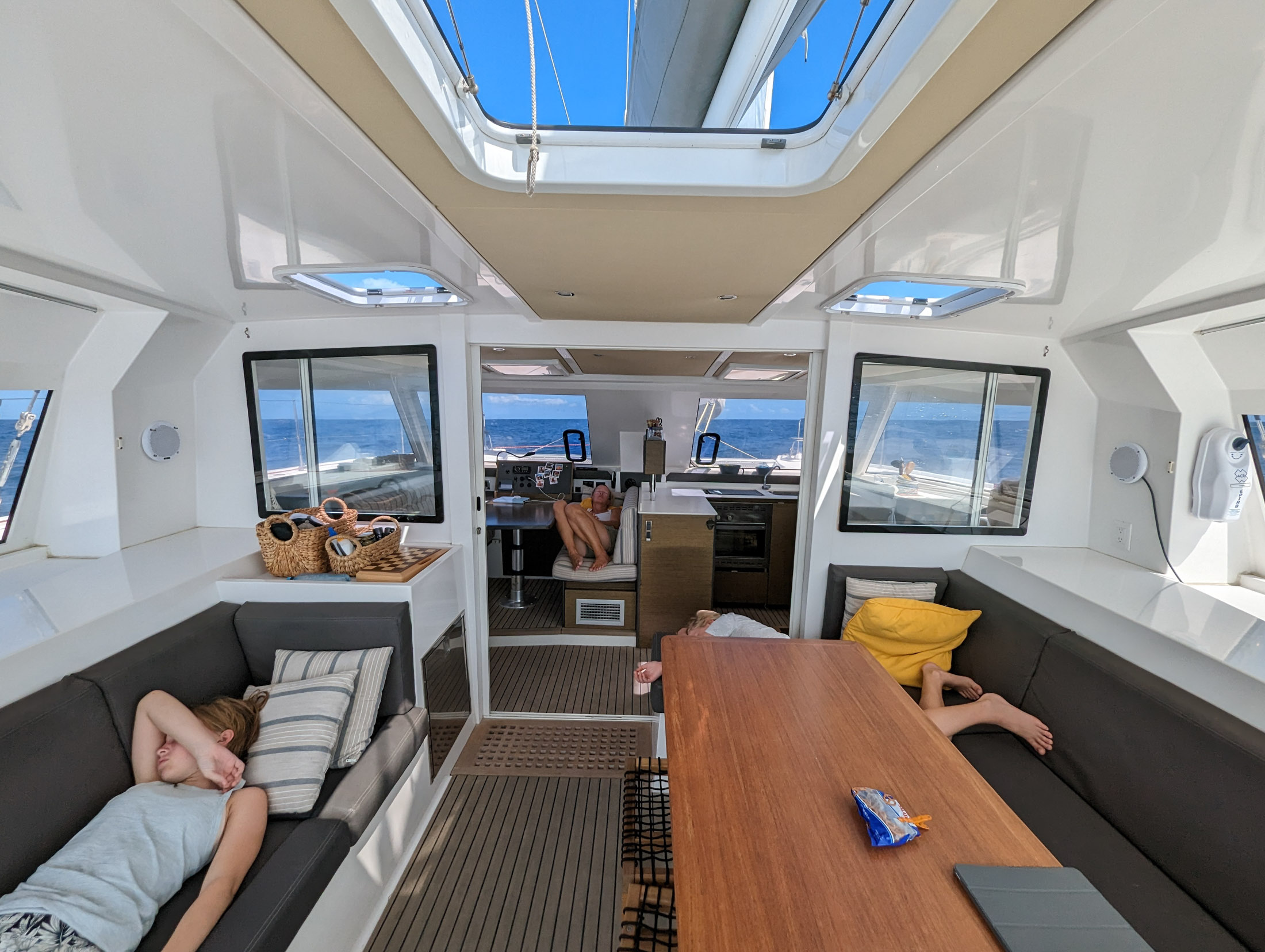
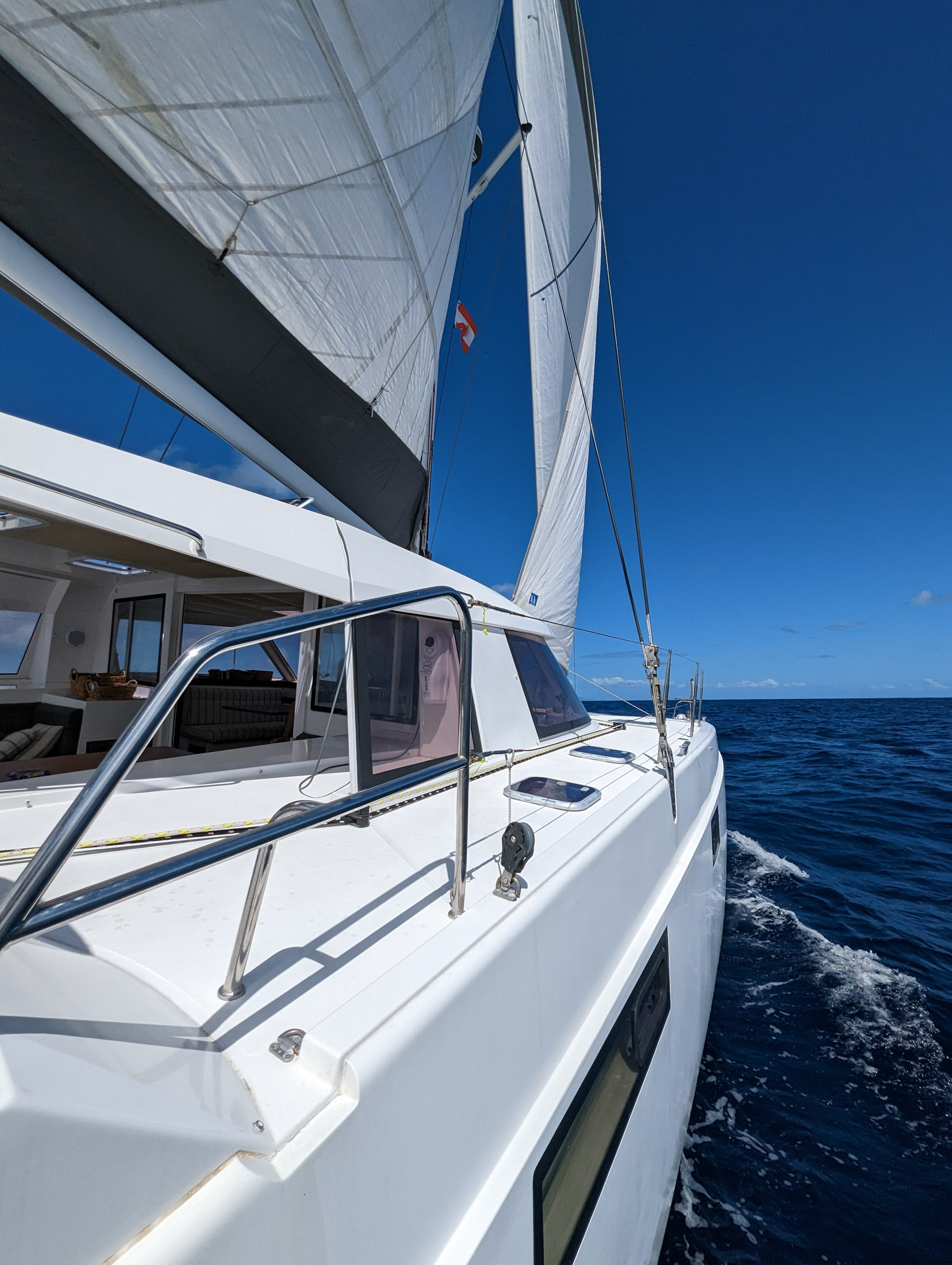
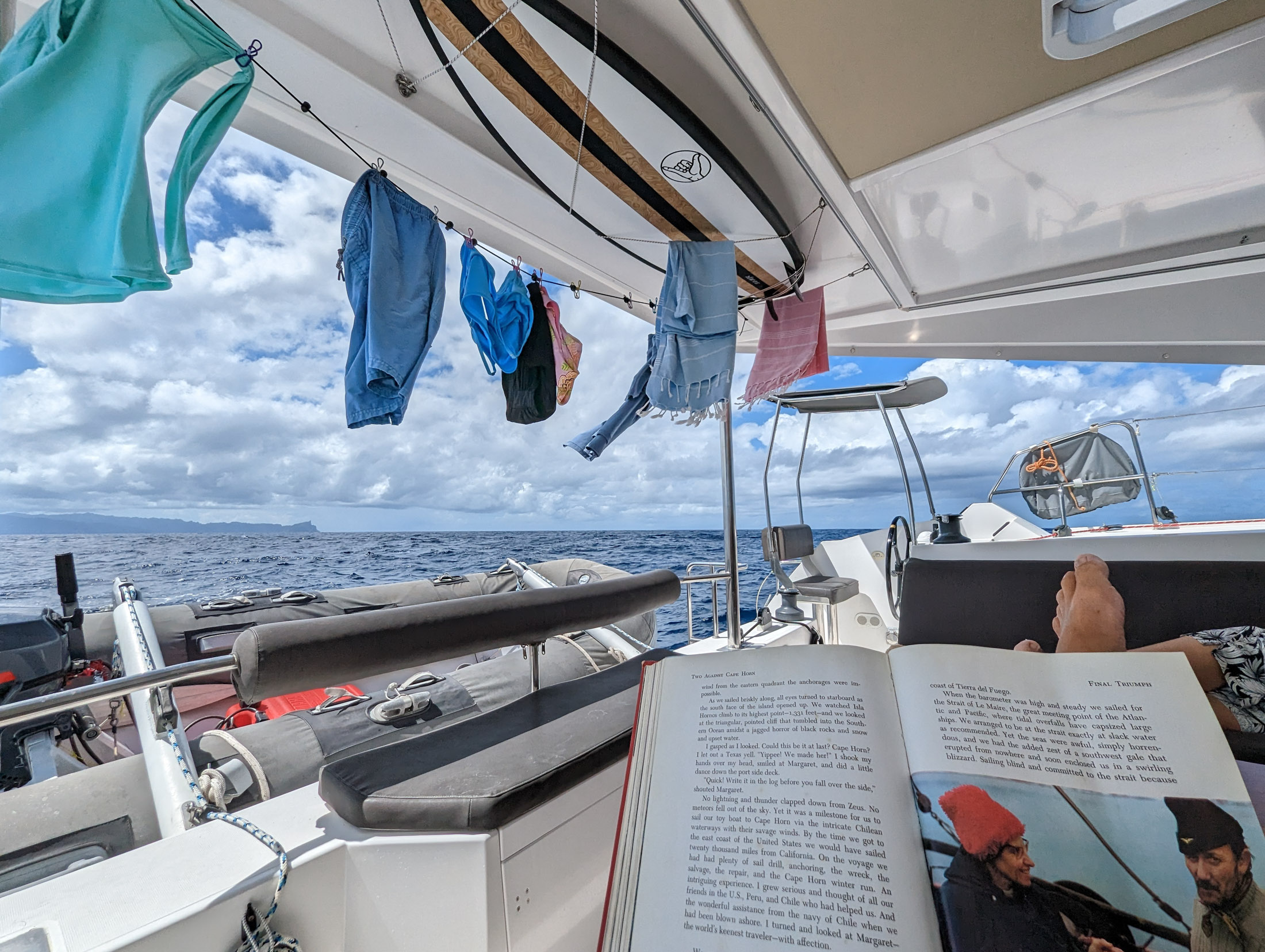
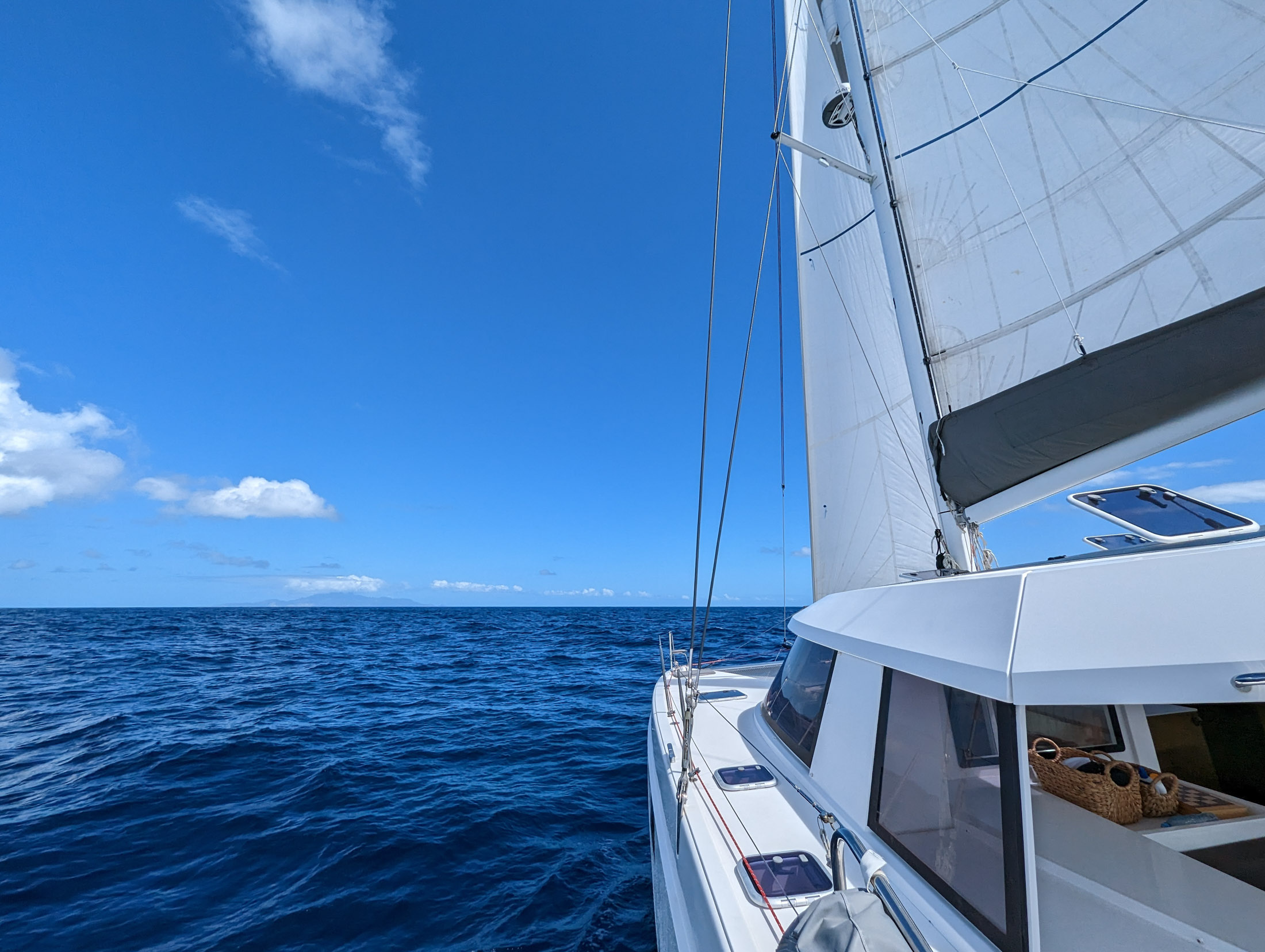
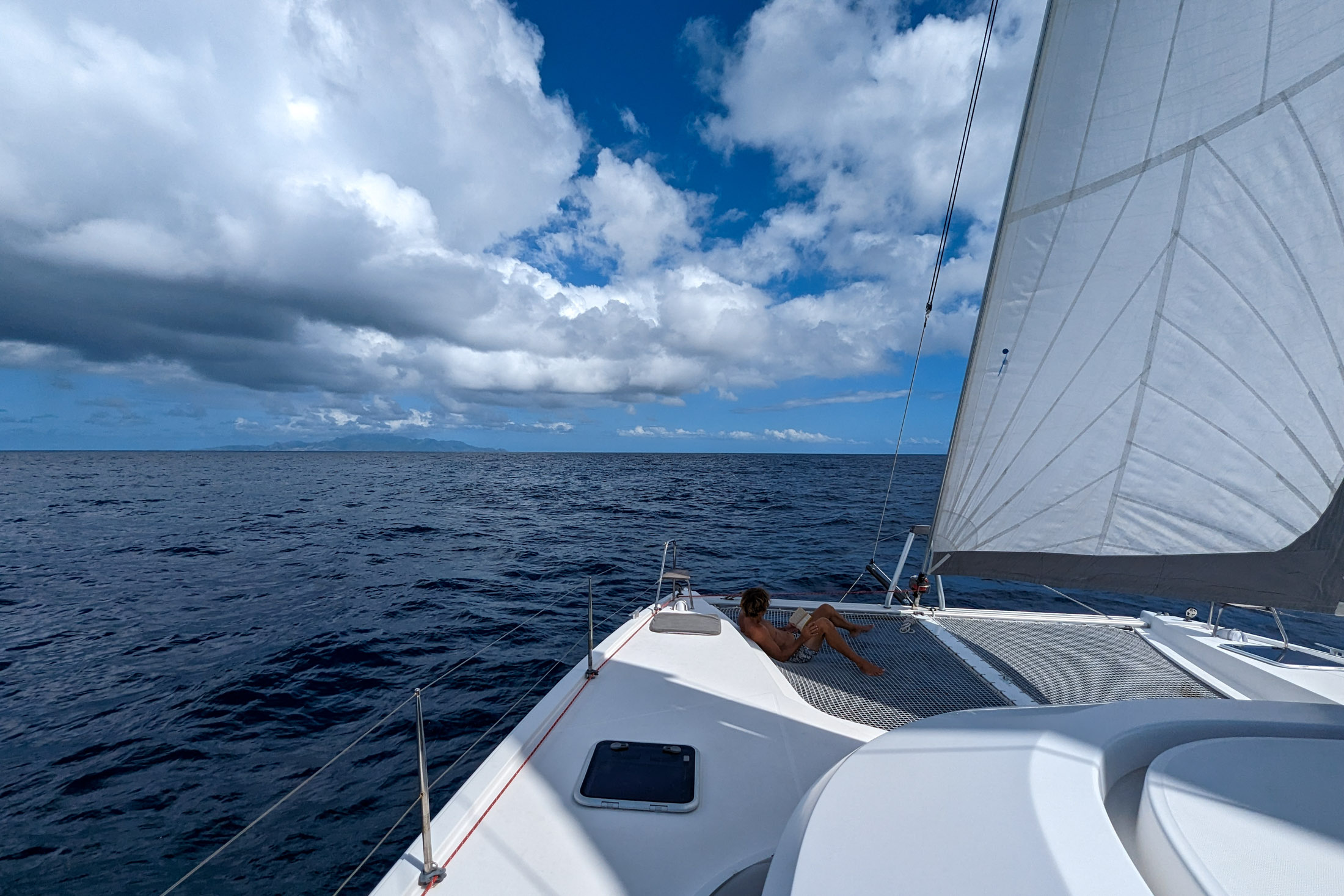
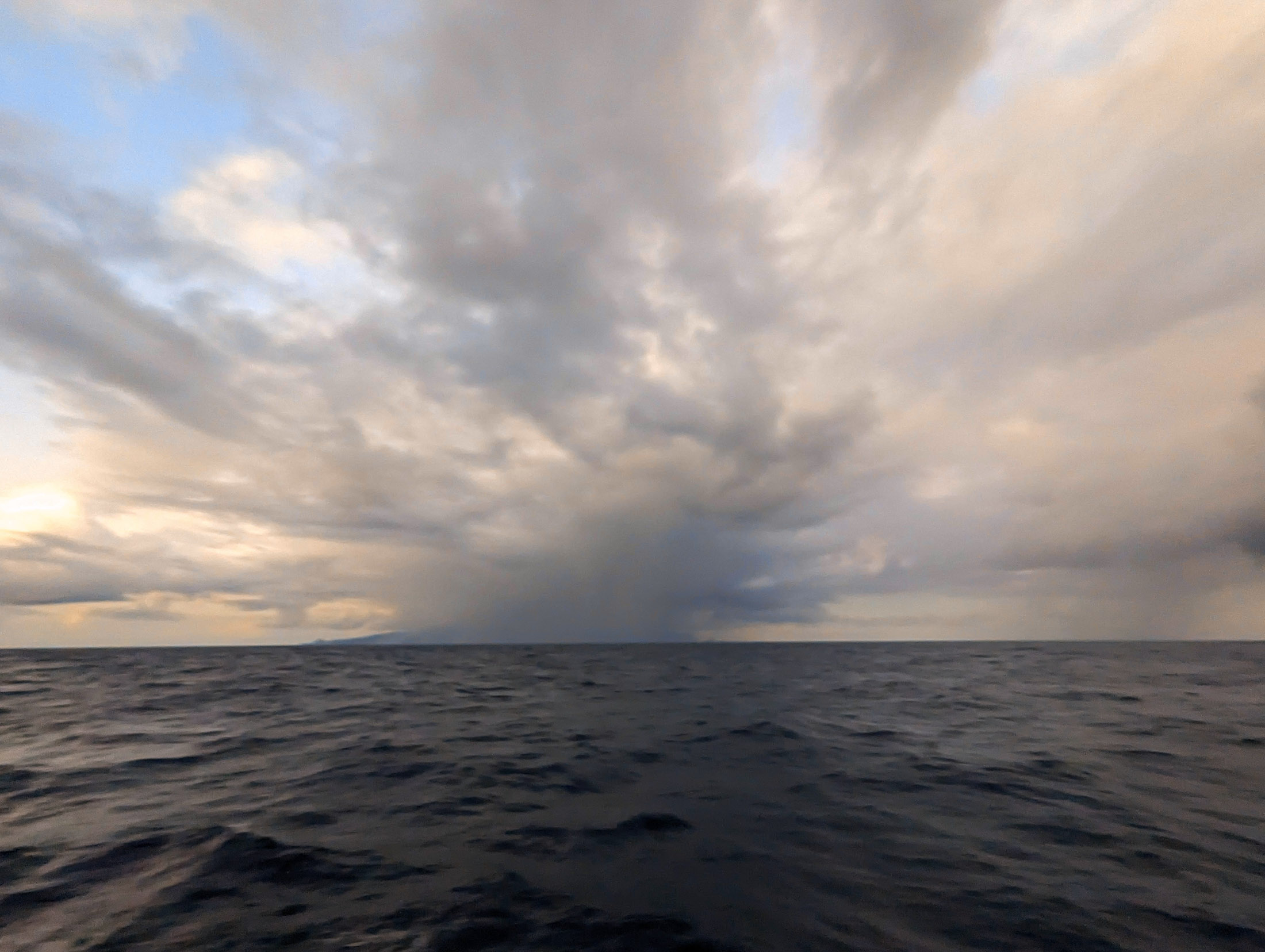
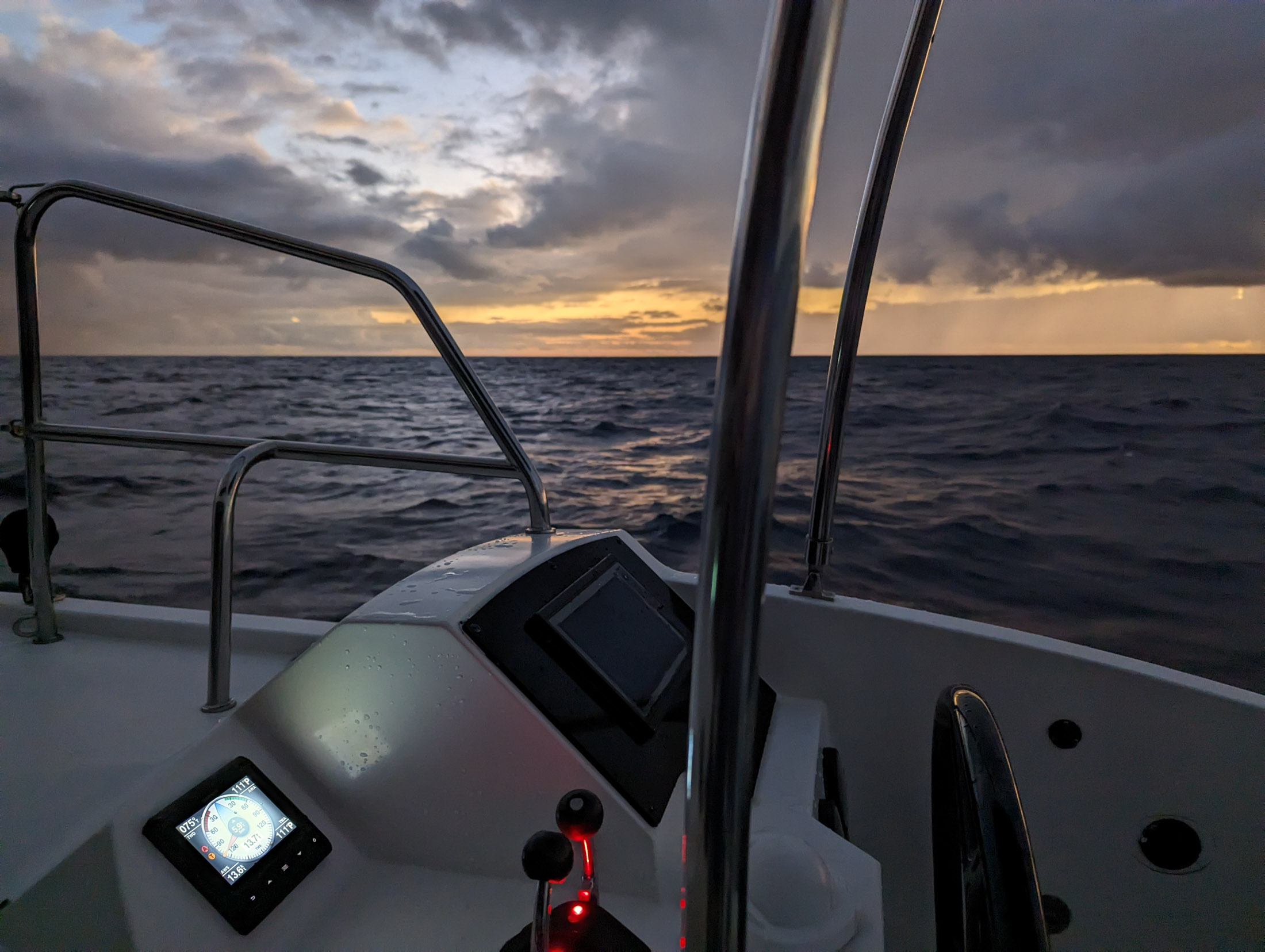
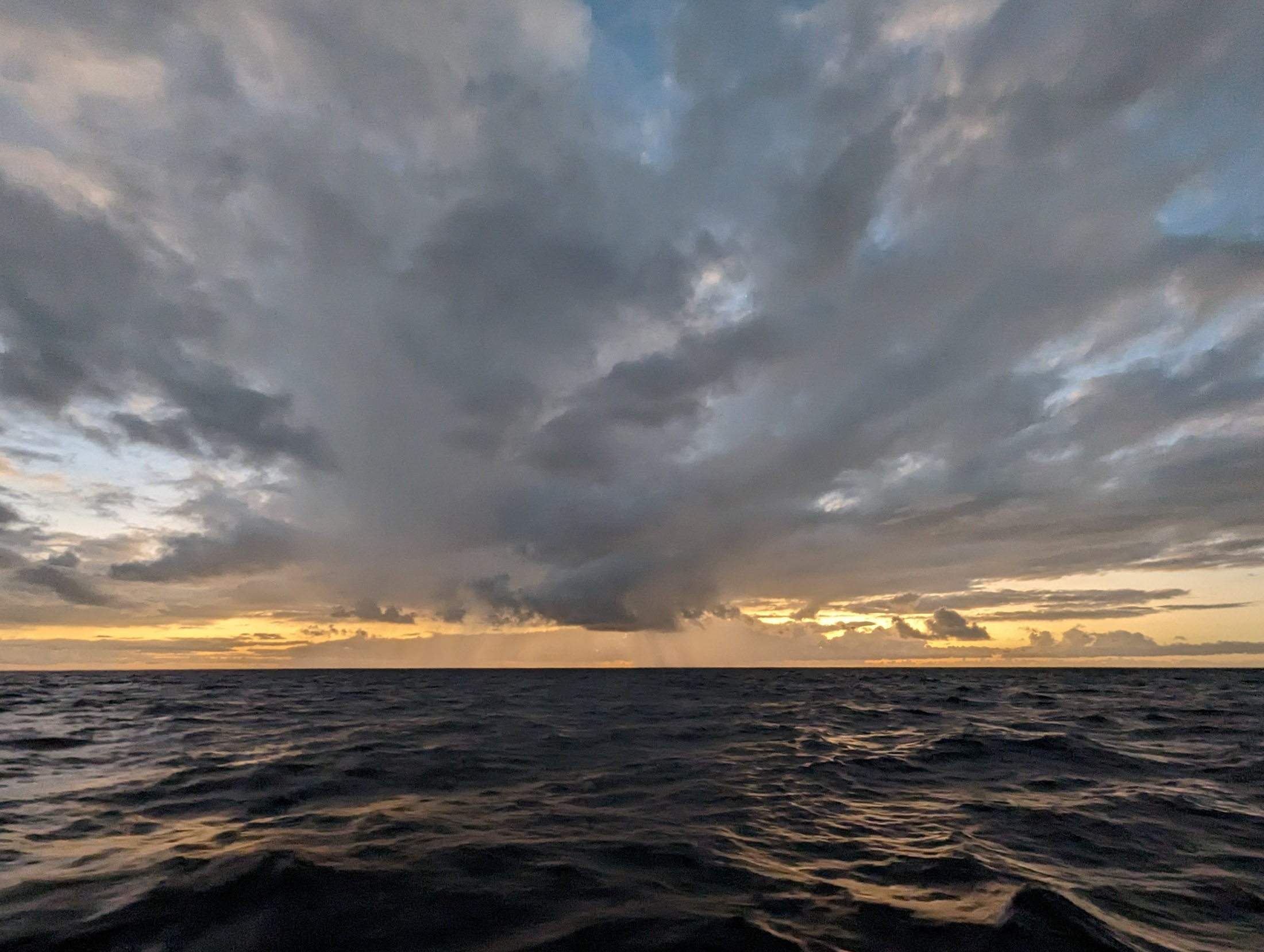
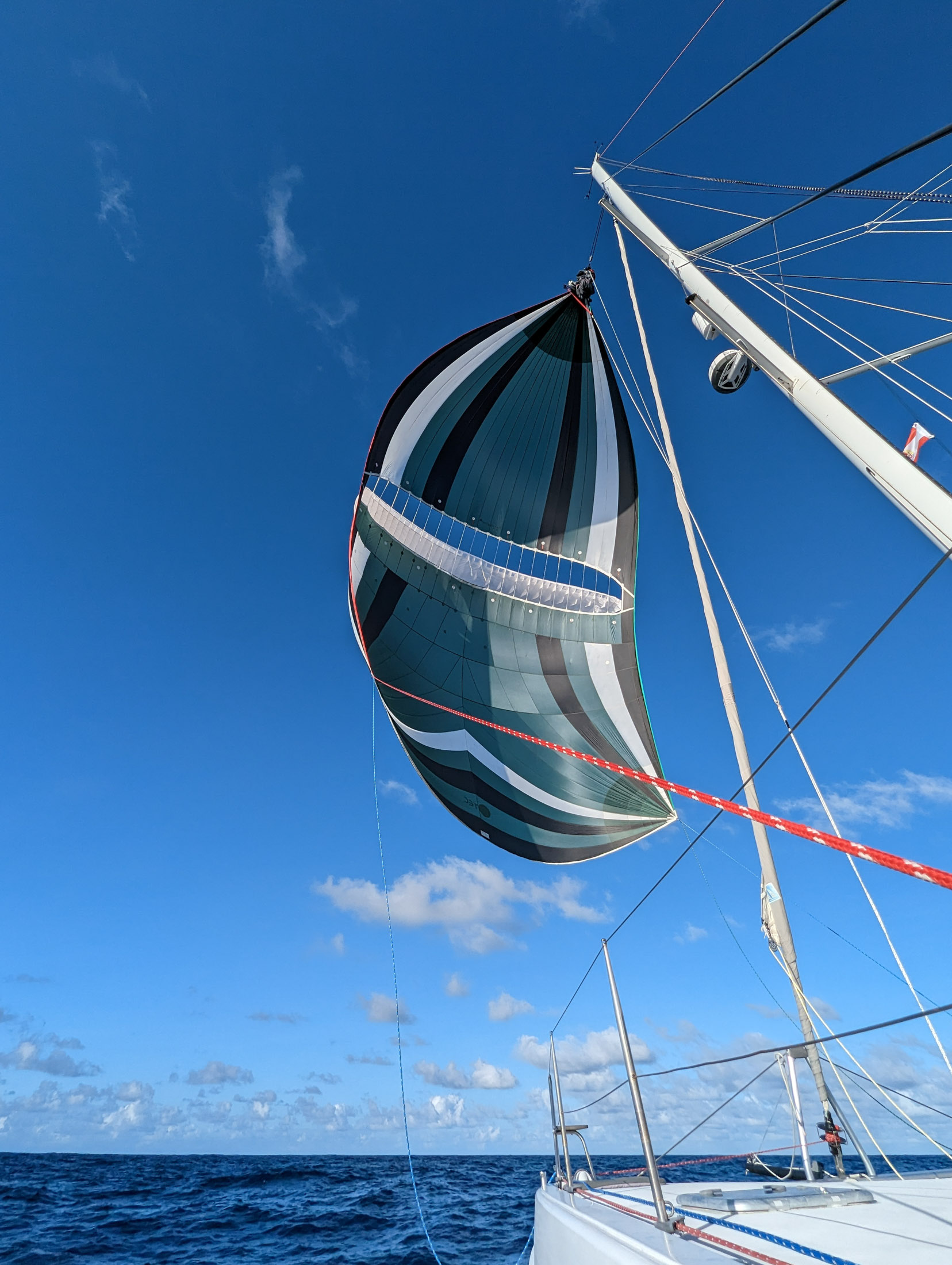
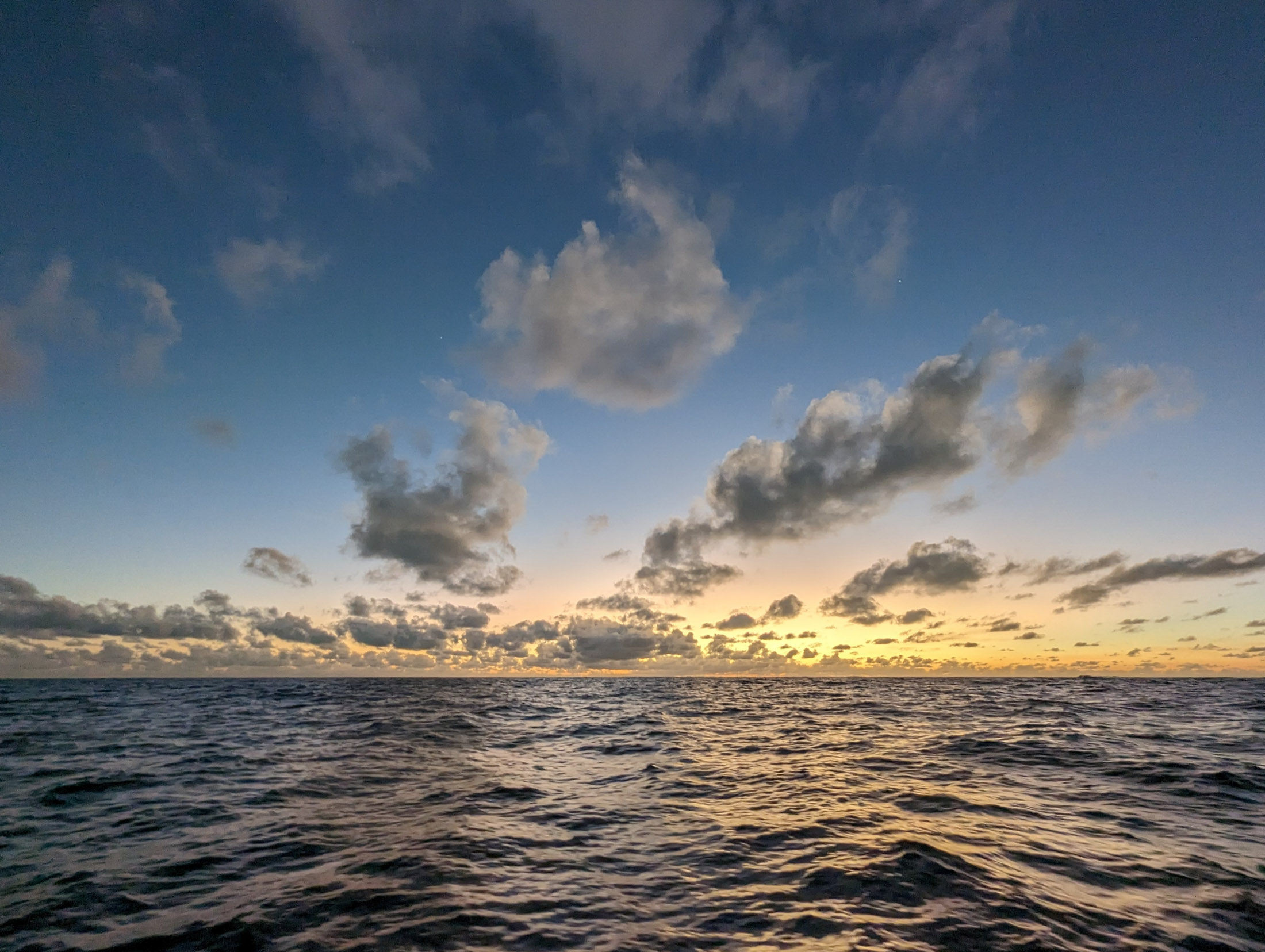
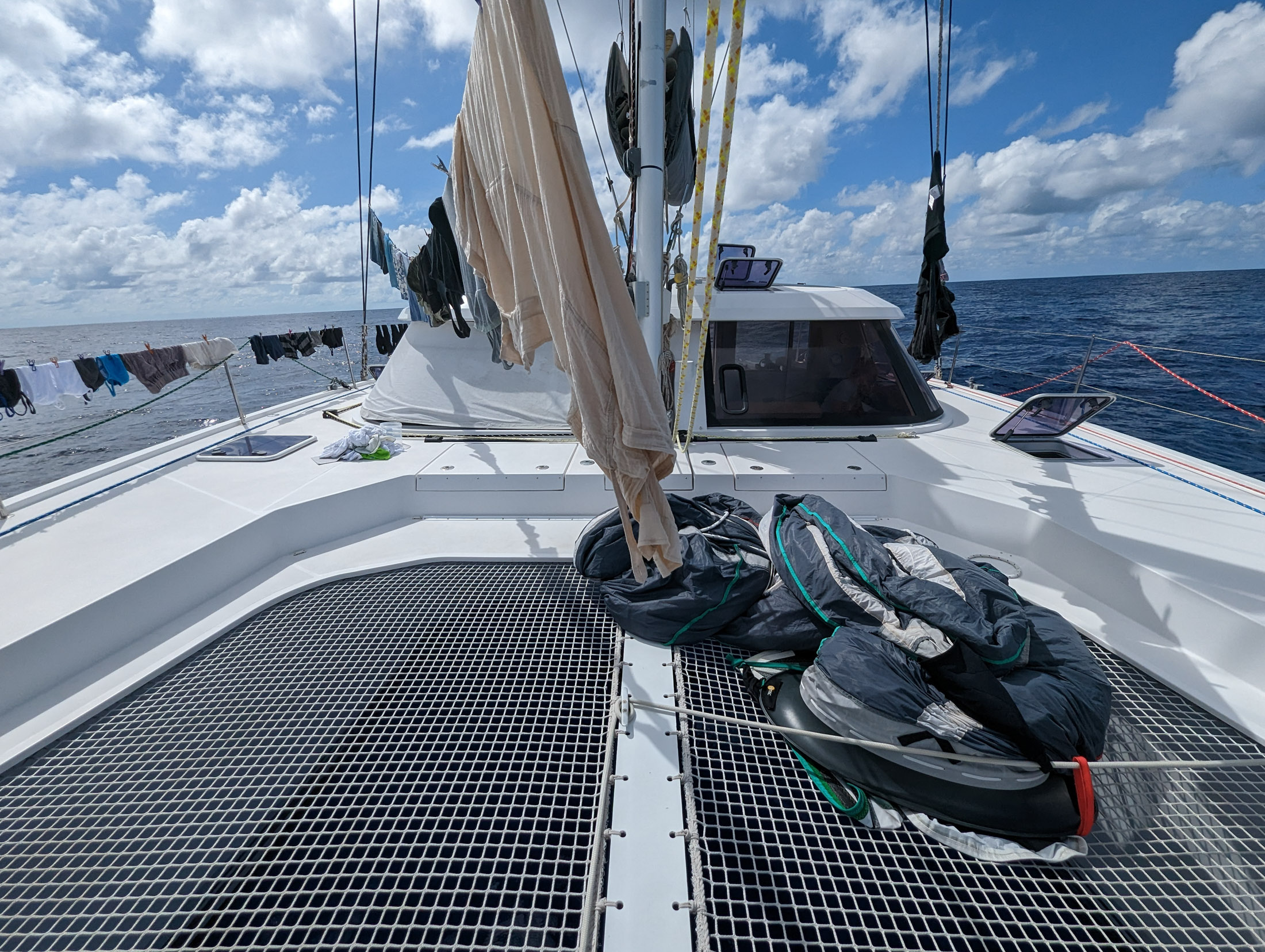
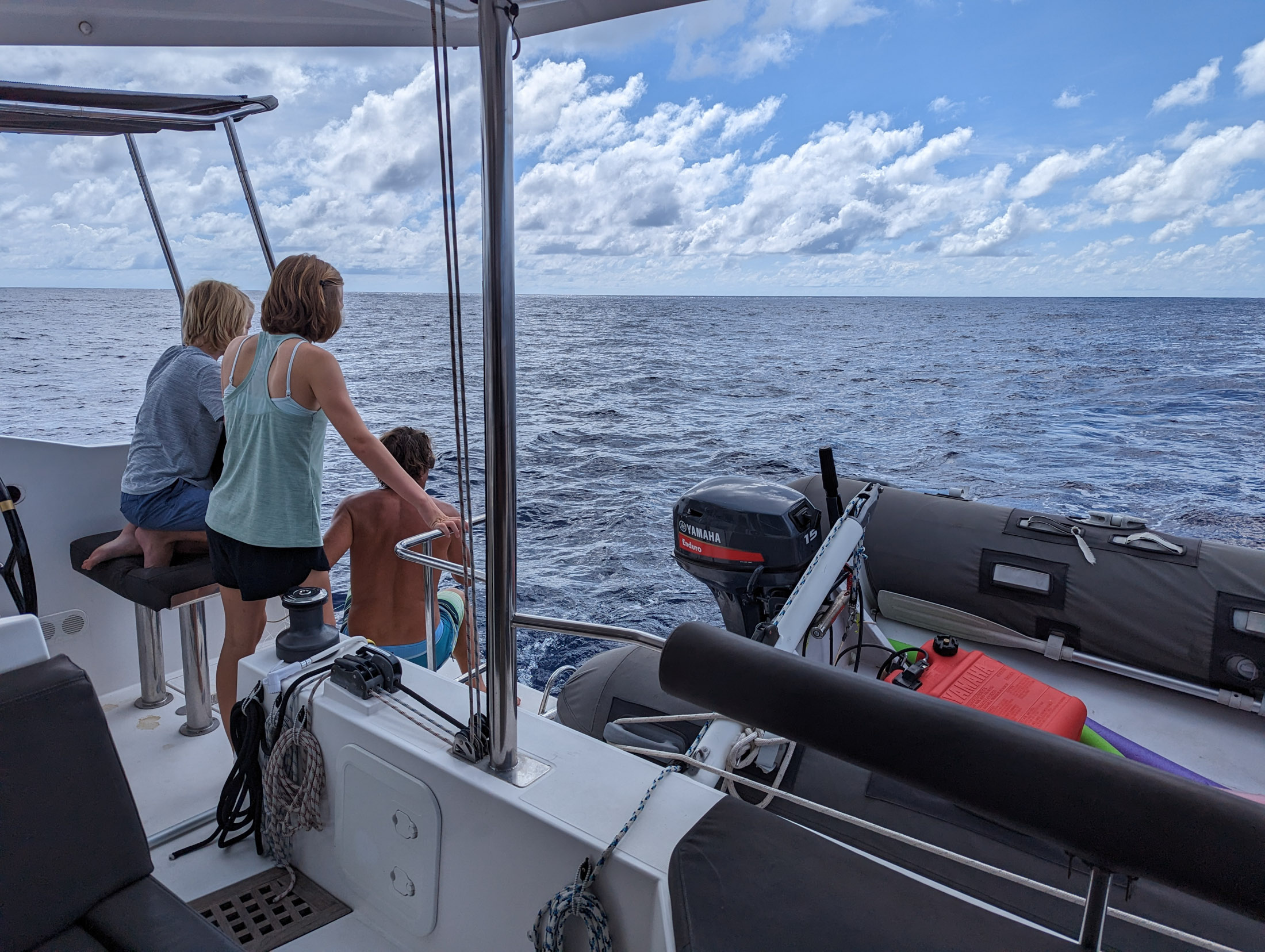
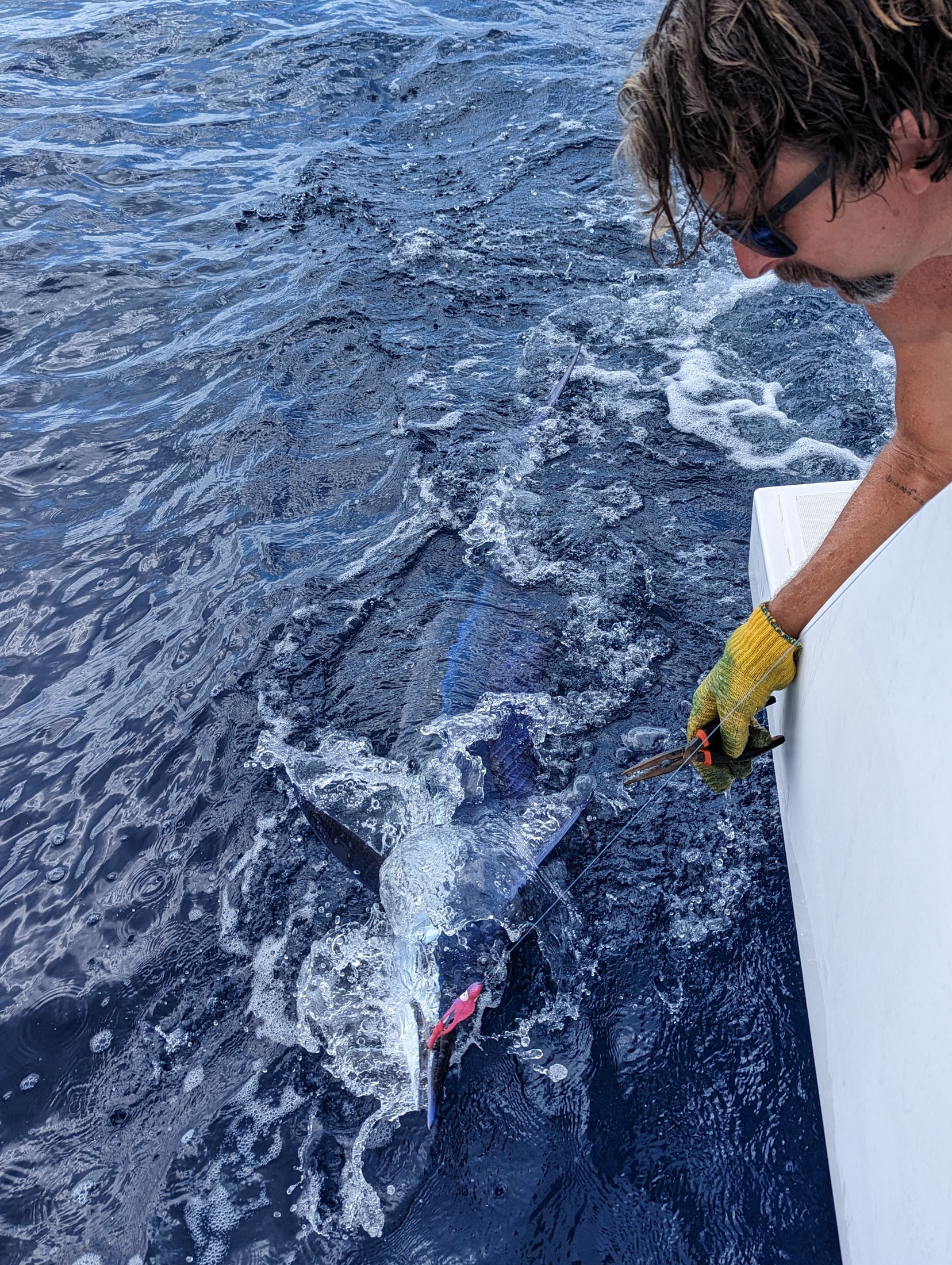
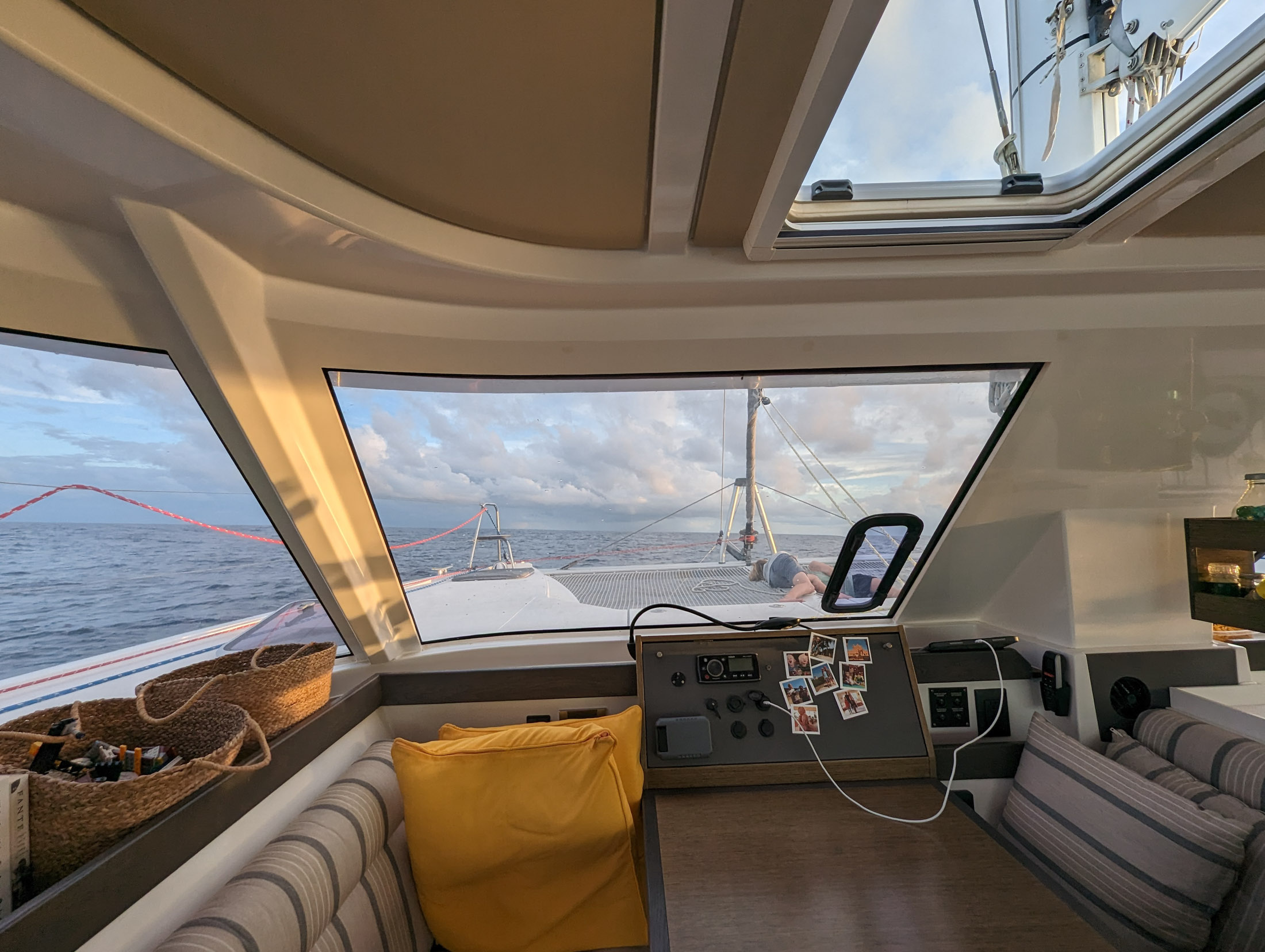
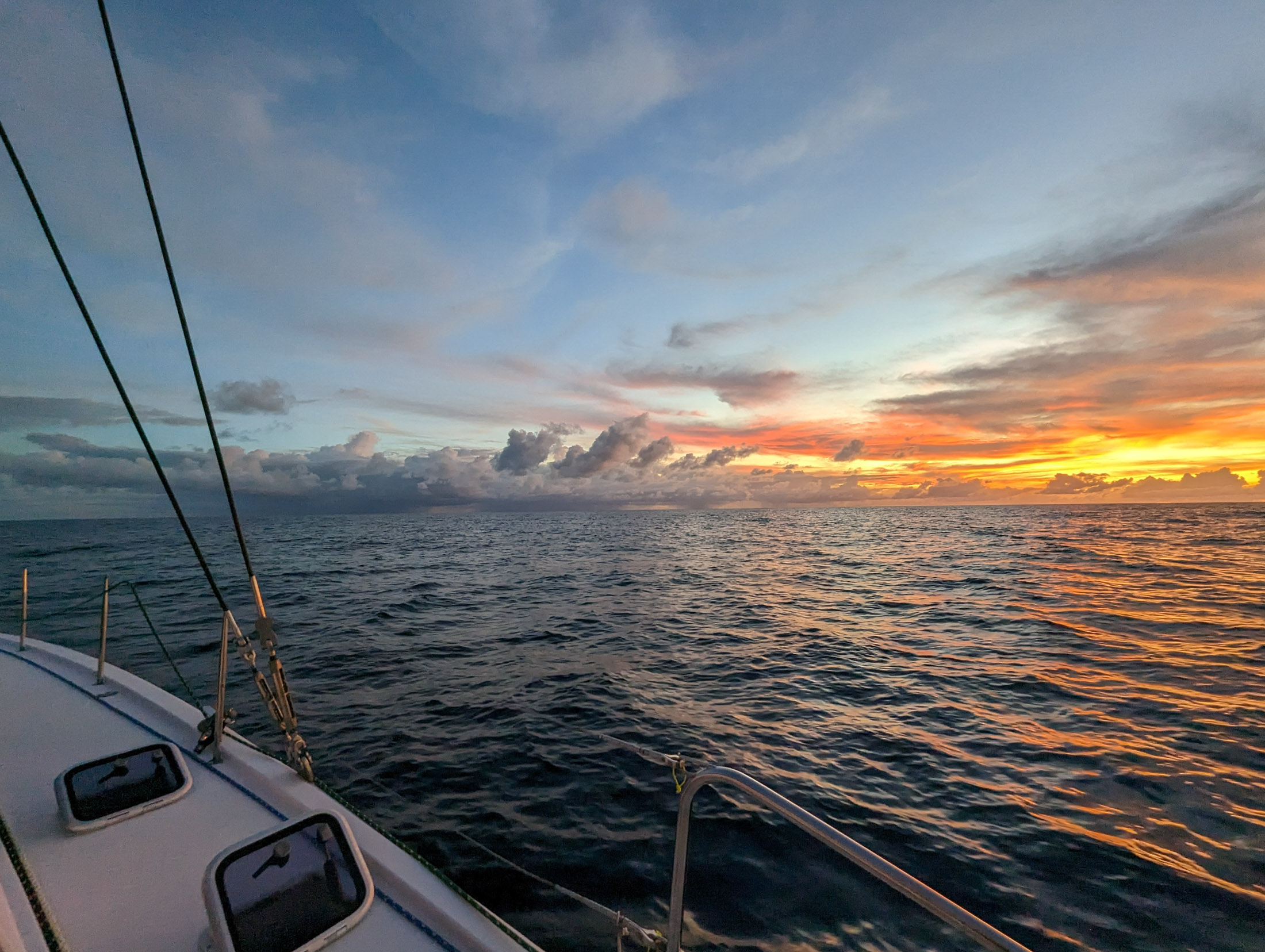
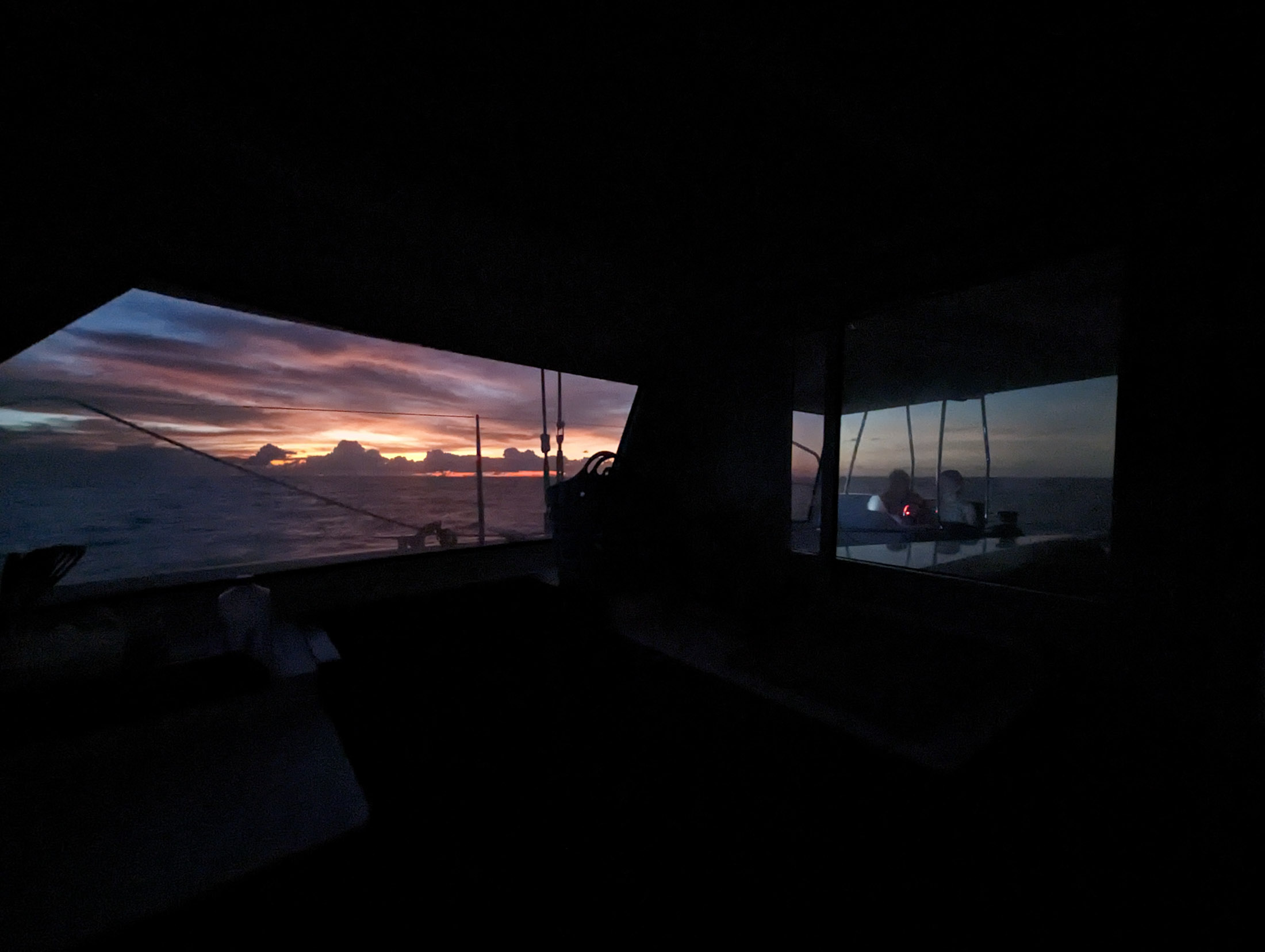
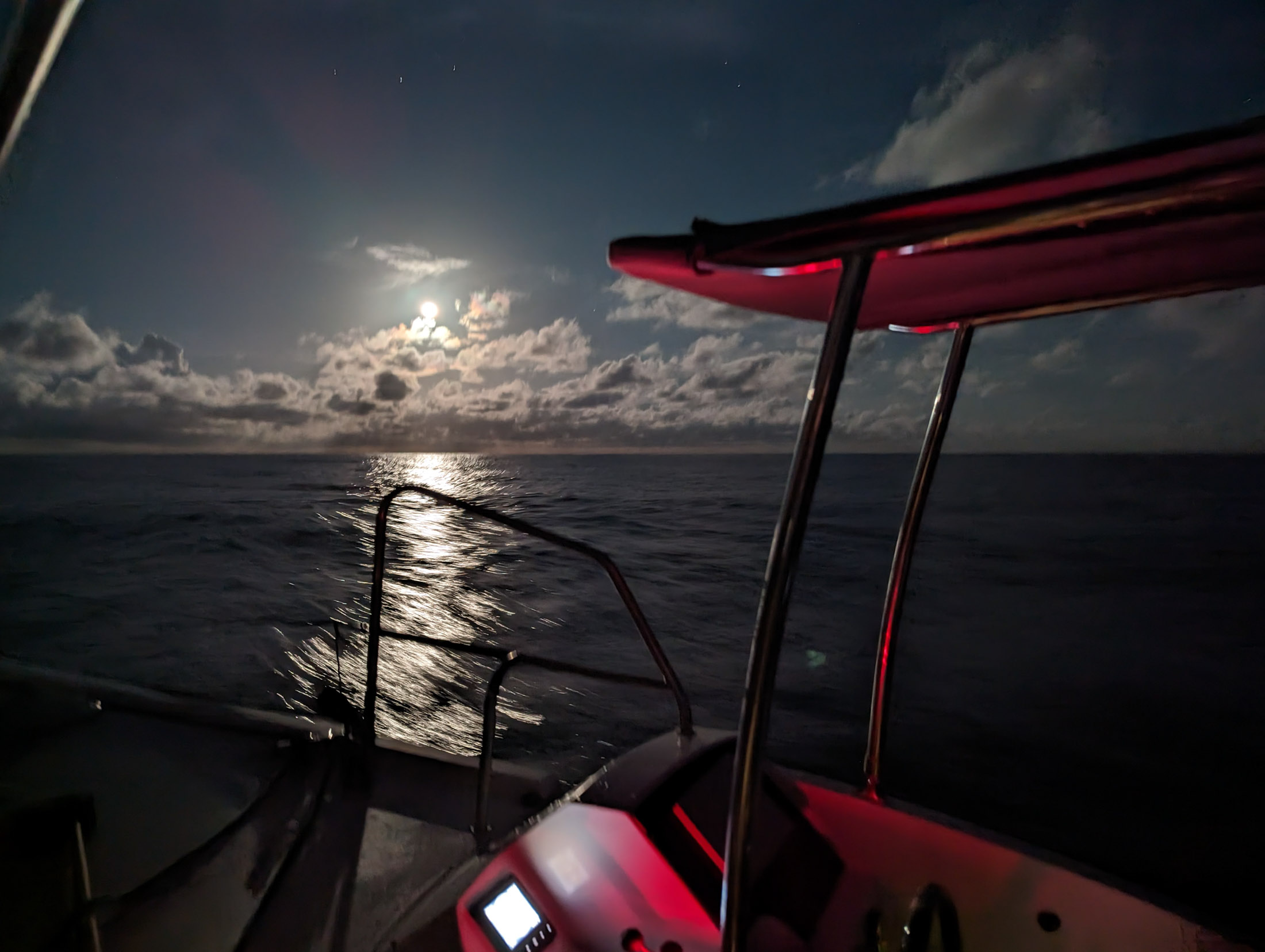
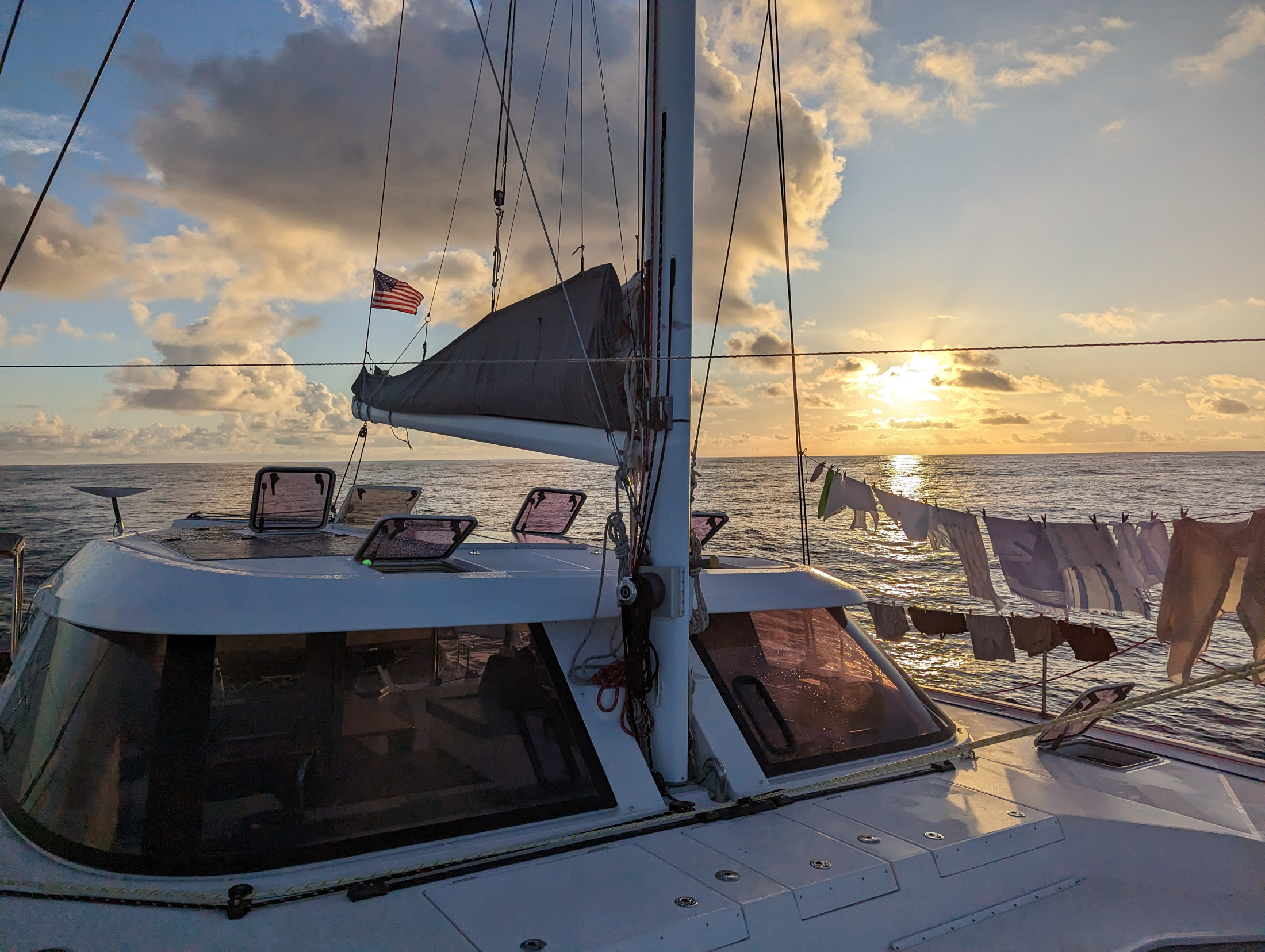
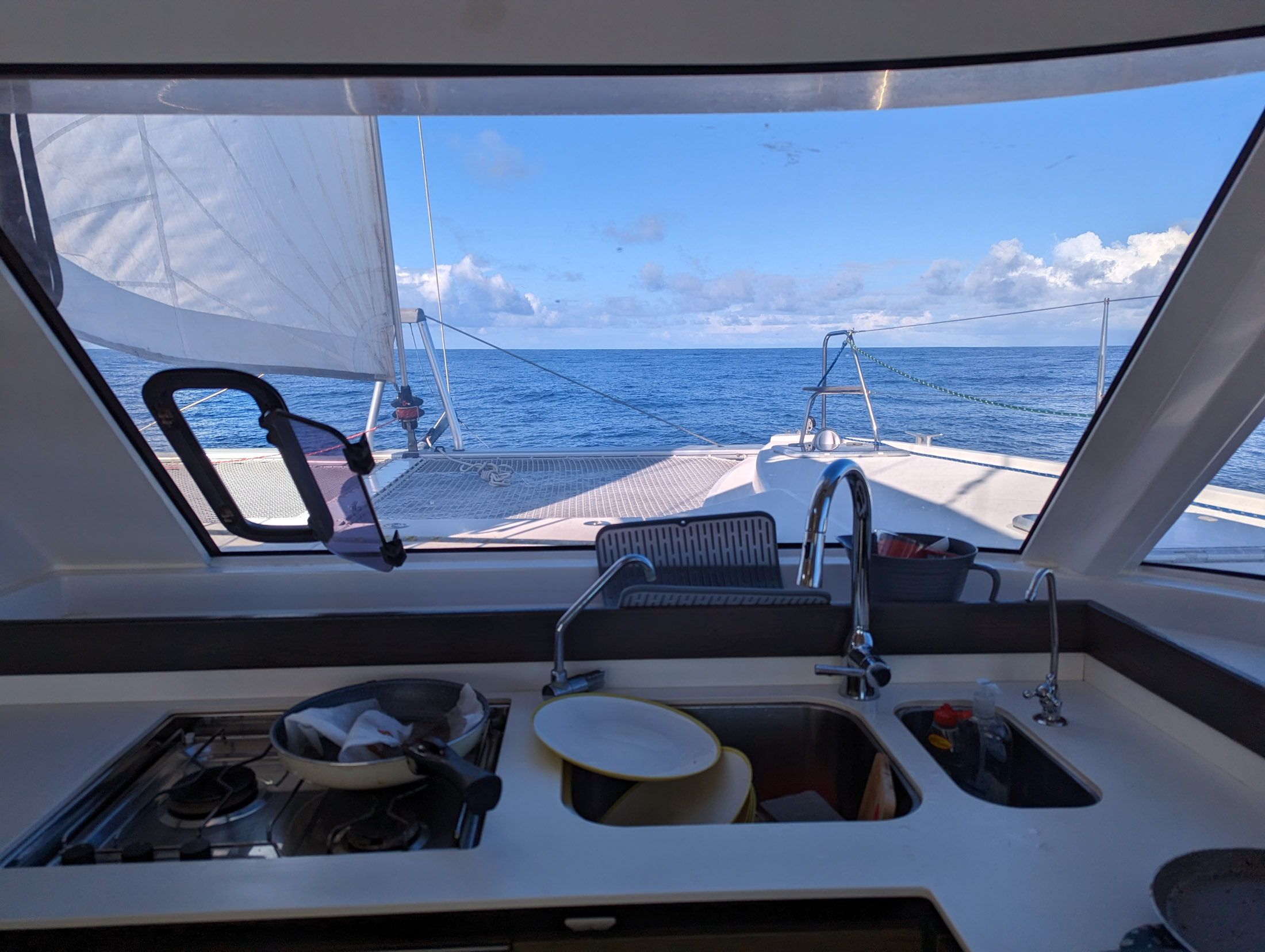
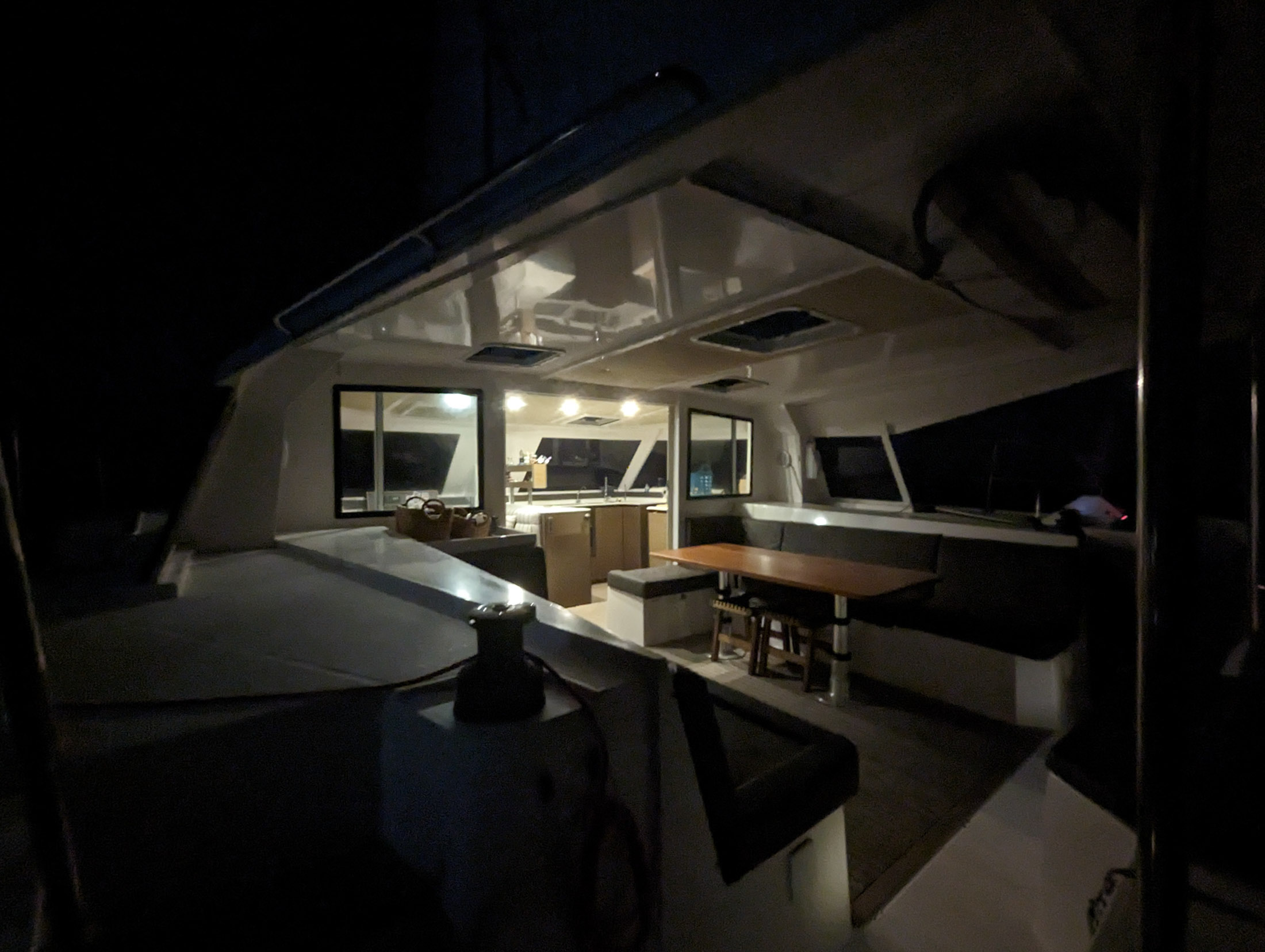
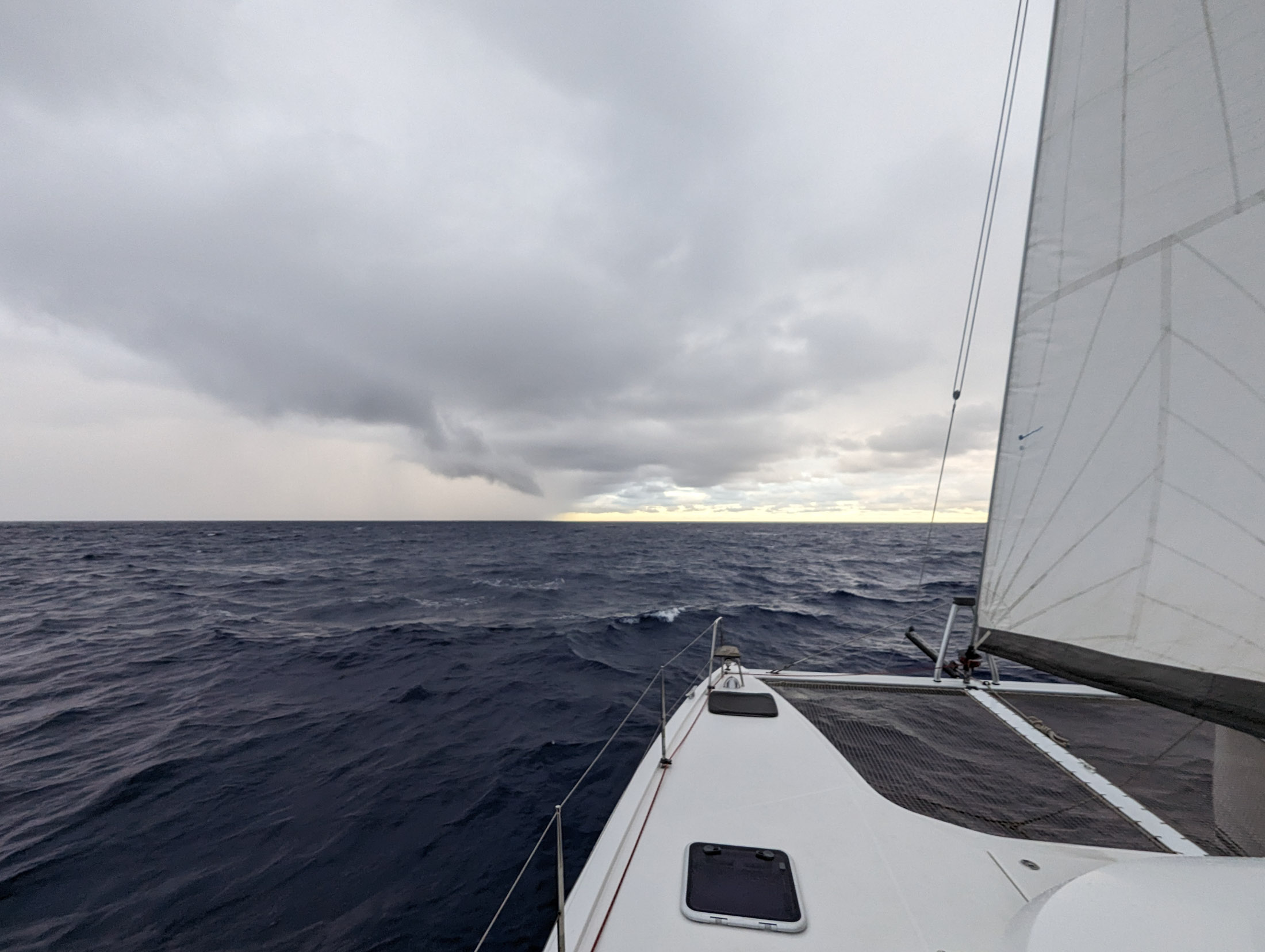
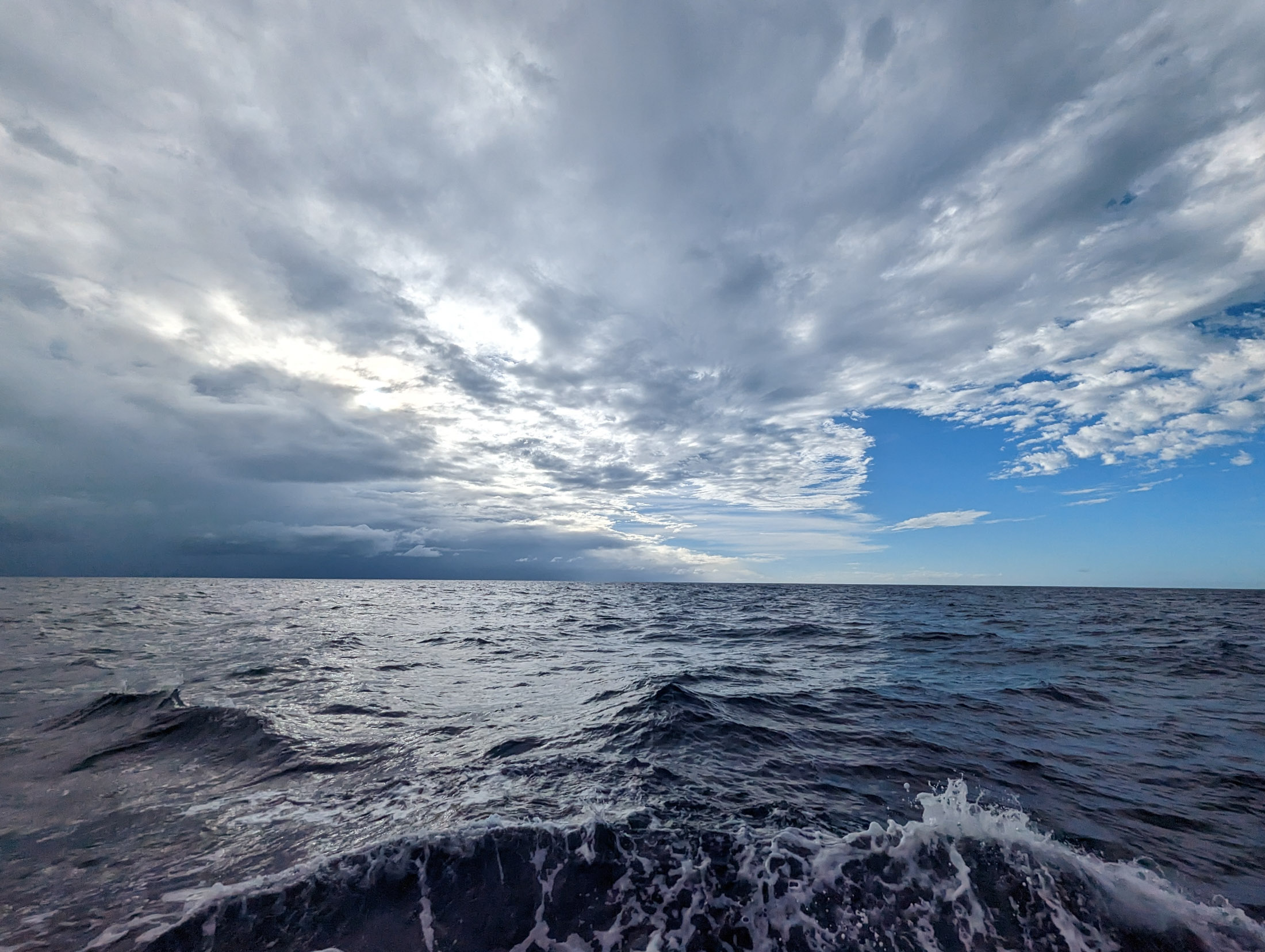
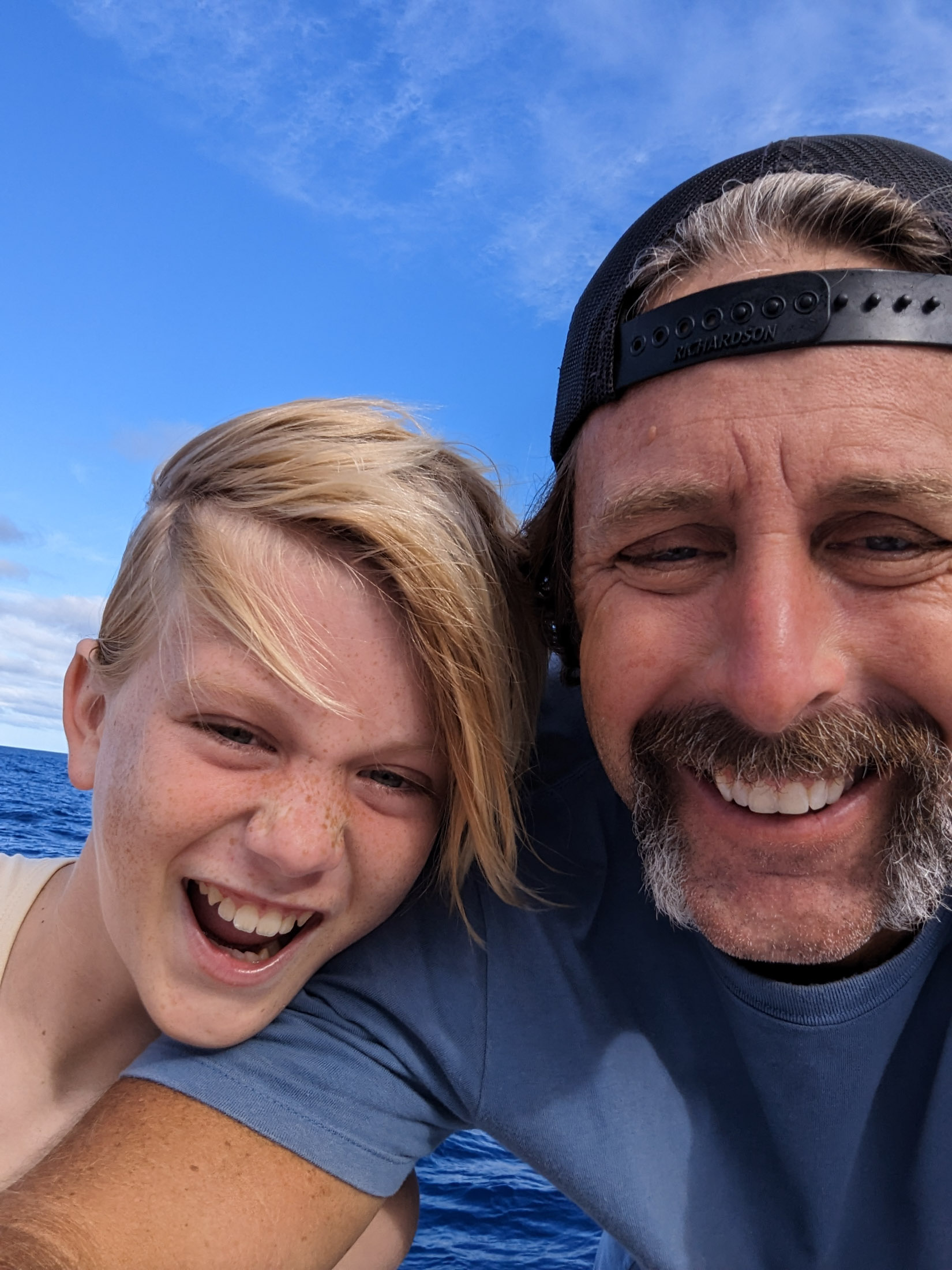
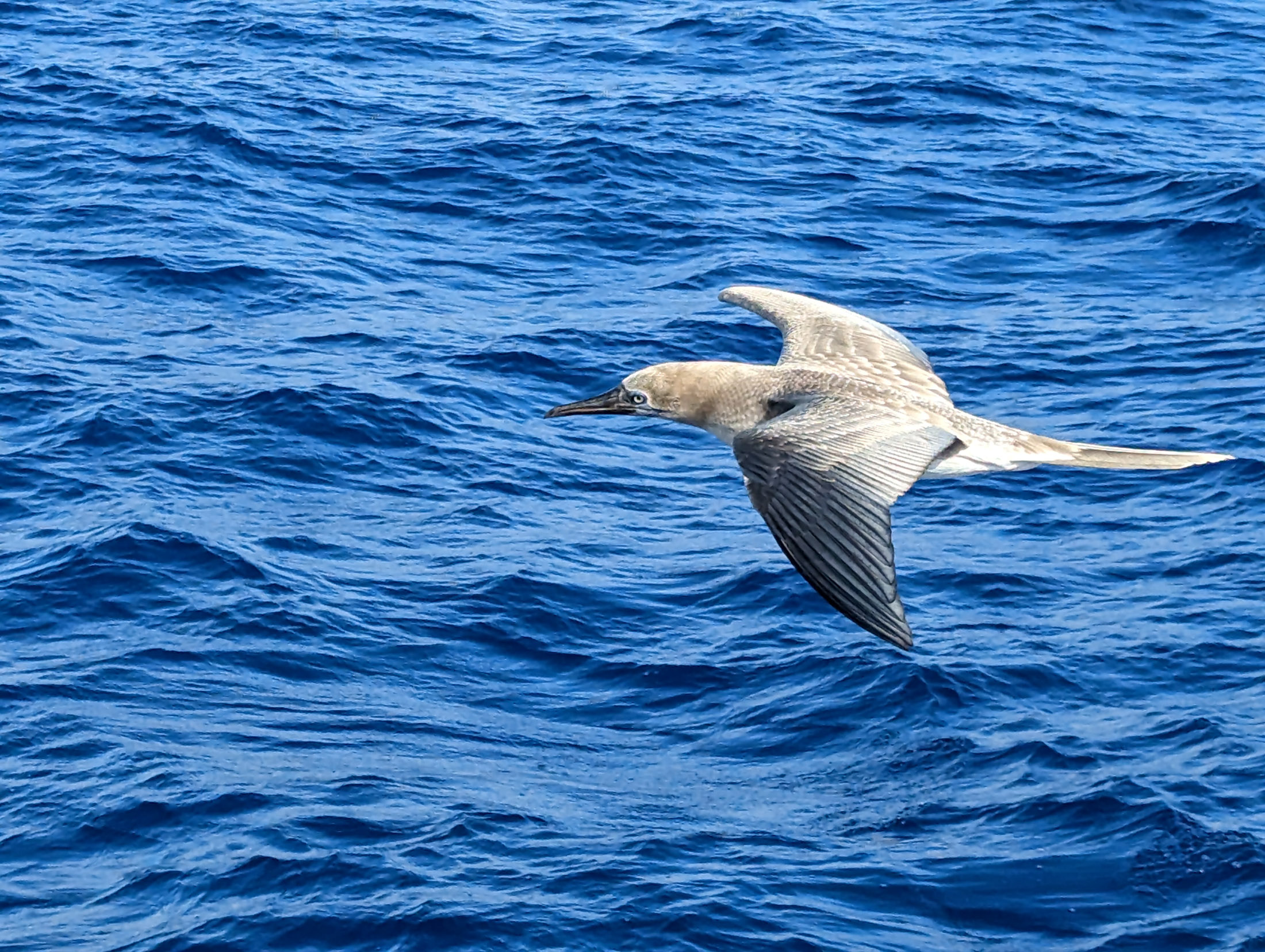
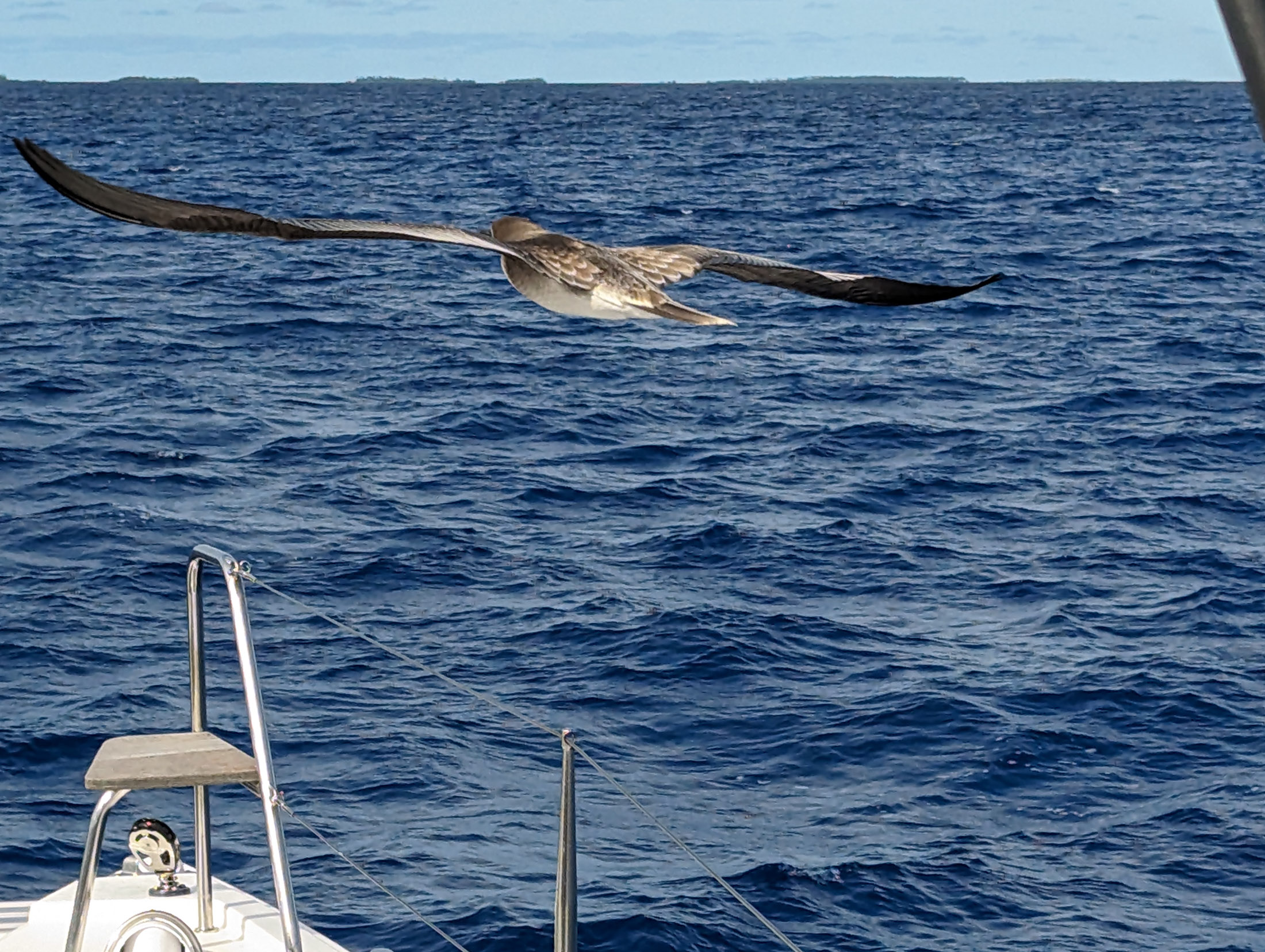
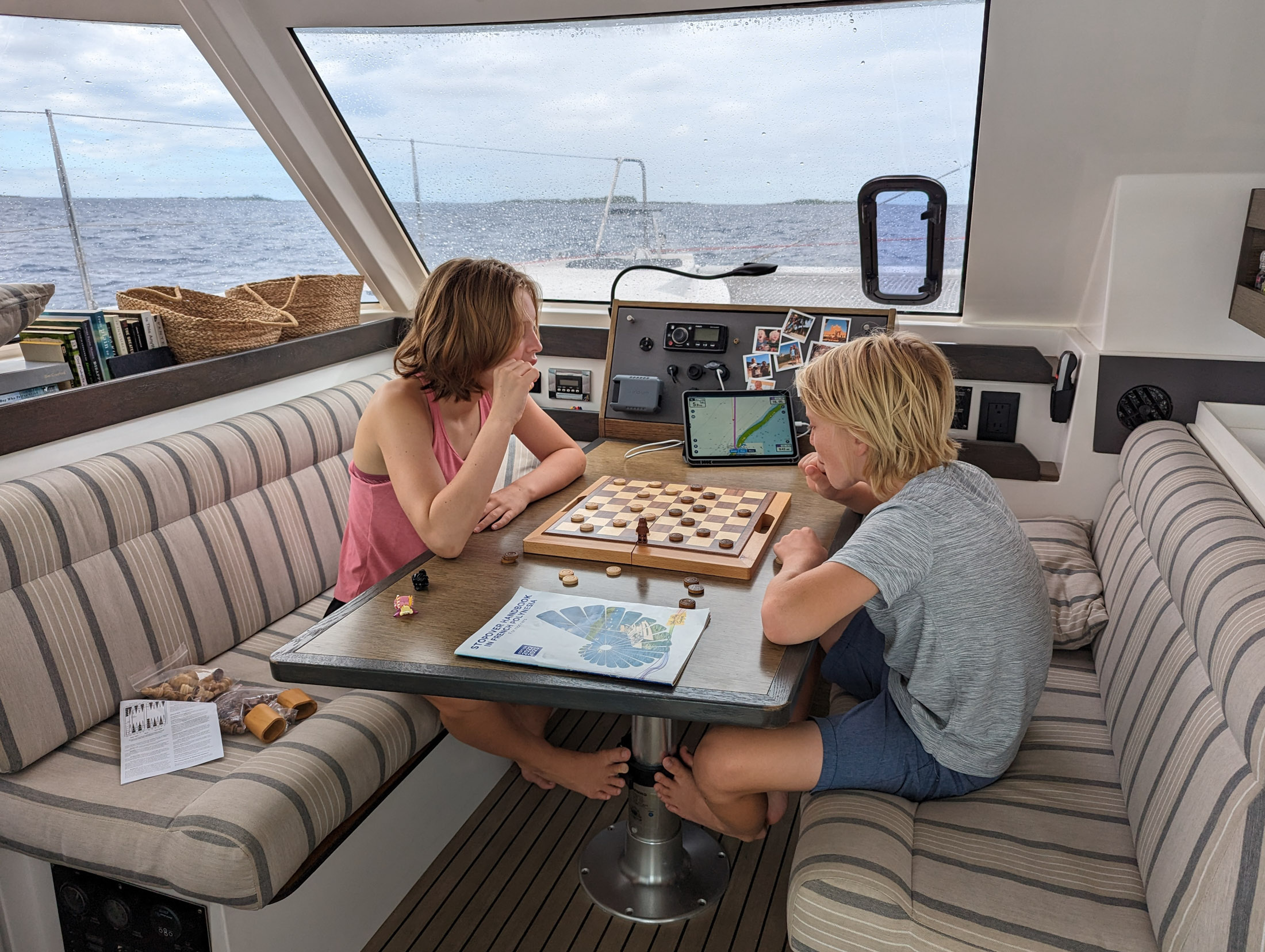
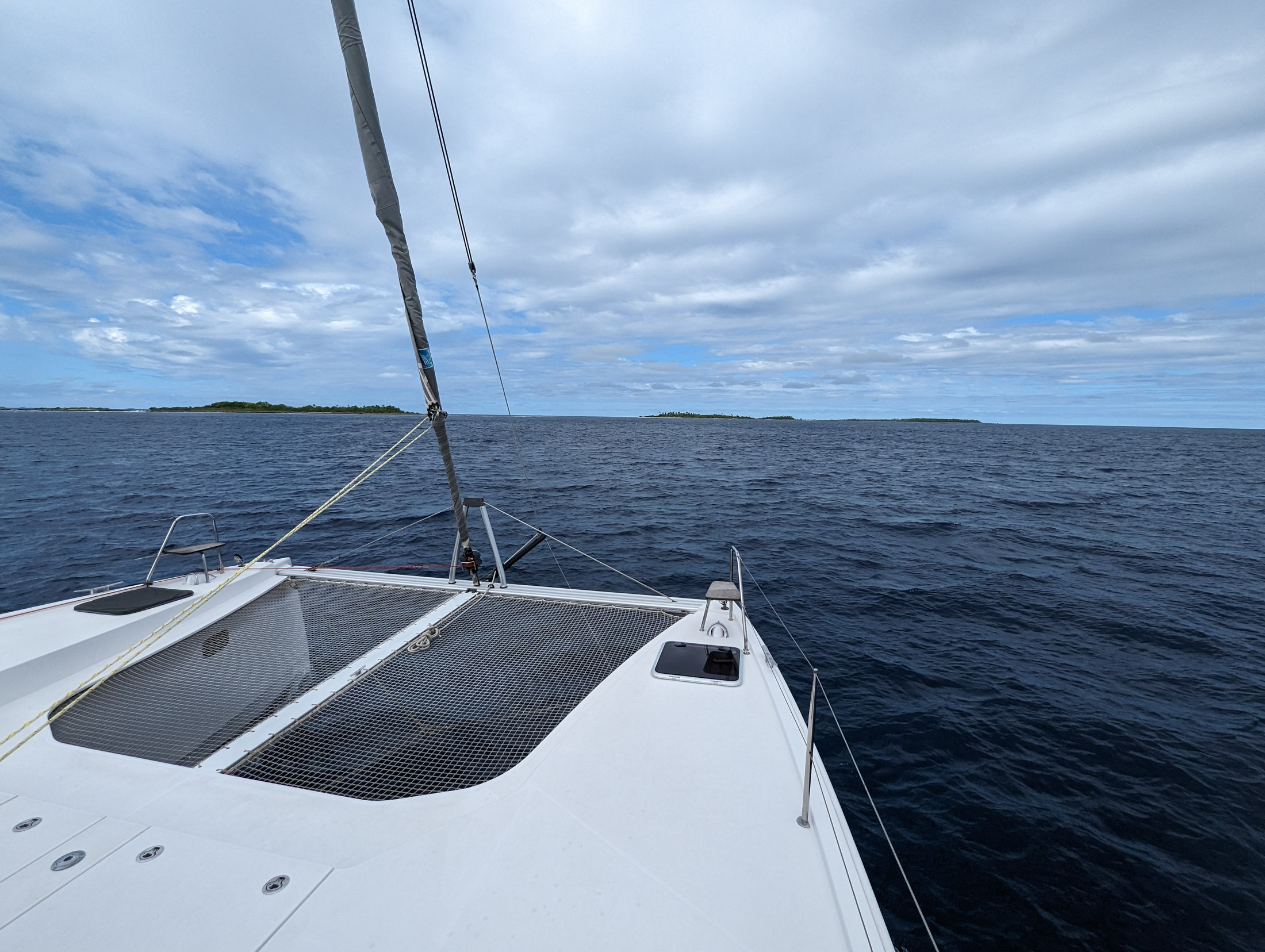
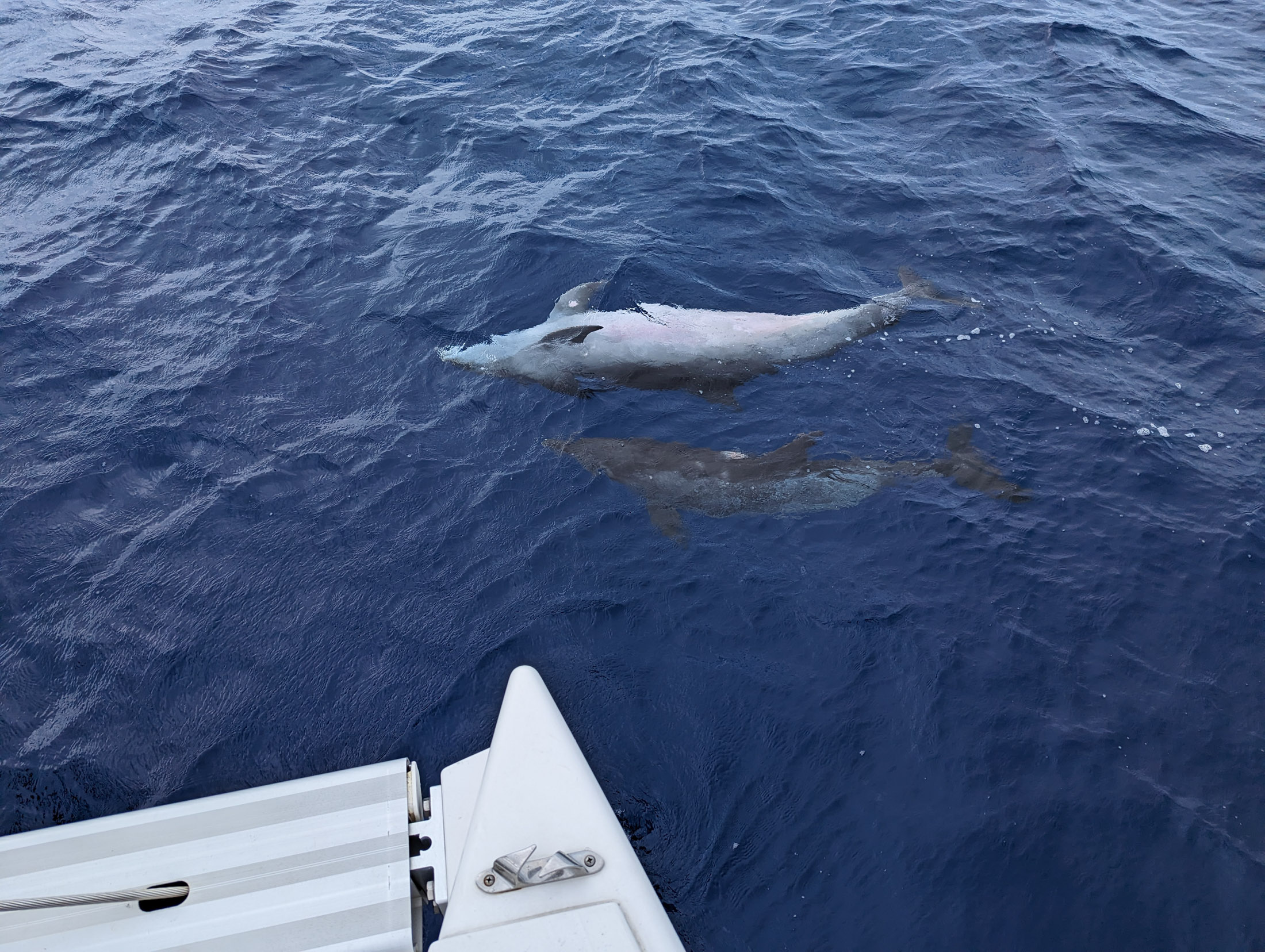
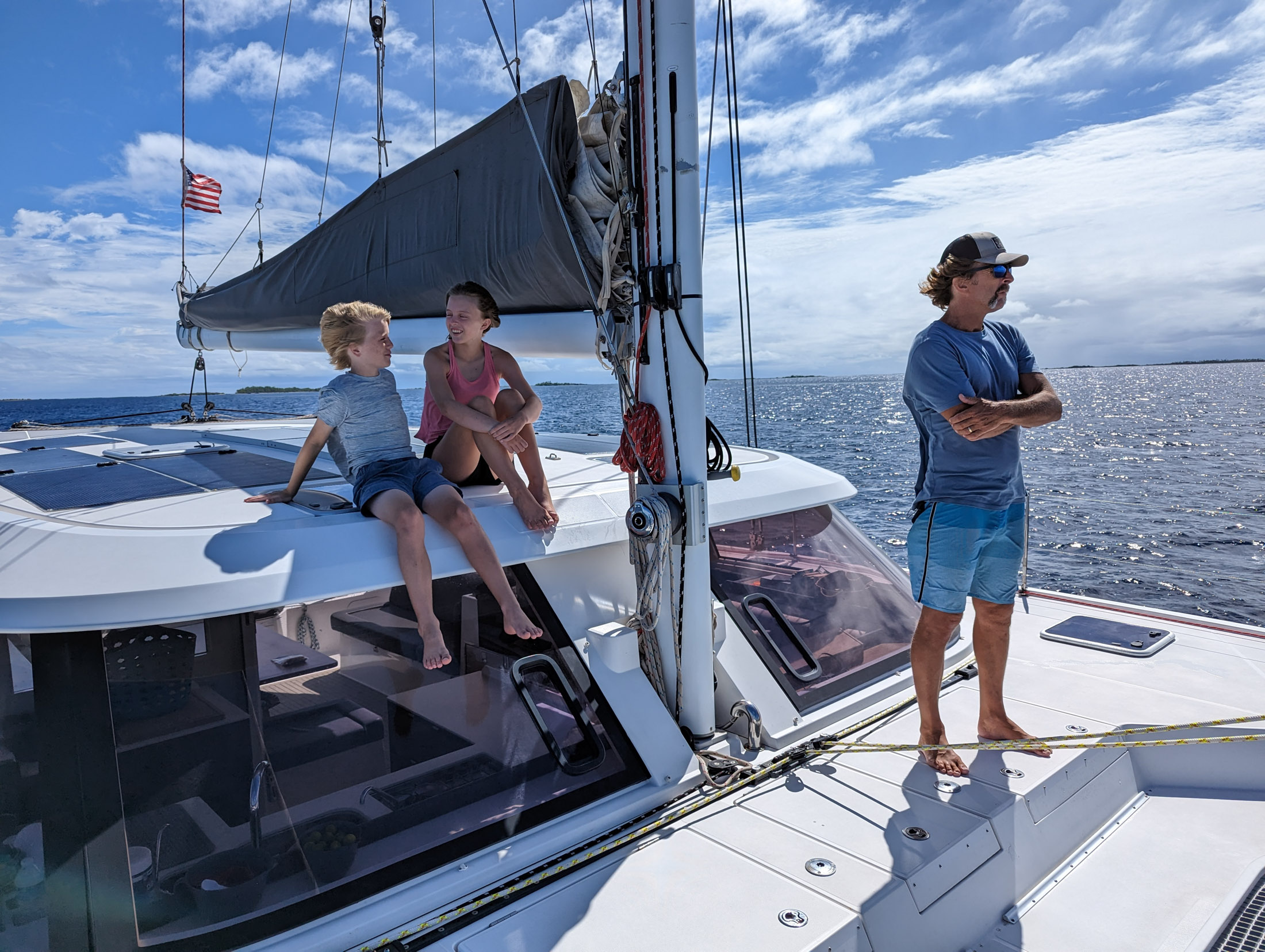
7 Comments on “Sailing/Motoring to the Tuamotus”
Your photos are beautiful, I so look forward to your updates about your adventures. My son took off work two years to live on a sailboat on the Sea of Cortez along the coast of Mexico and down into Central America. I was able to join him for a few days moving the boat from Guatemala to Zihuatanejo. I do understand about nighttime travel making sure we didn’t run into anything on our watches. My son and his wife and two kids and dog we’re planning a trip like you are embarking on but decided to sell their boat and return to their previous lives and occupations. Thank you for your updates and thank Elon Musk for his internet development.
We made it around the horn (on a big ship) fine. I researched out when the least storms occur so we went the end of January. I heard people having really rough rides. And missing some ports. Then I met a lady in the laundry room that was on her second trip because it stormed her first cruise and they did not make it to any ports. And I read so many books where people were scared to death with storms. Chile and Argentina are fantastic!
You might look for the book The Wager by David Grann… about British ships wrecking while trying to sail around Cape Horn in 1741 … talk about changes in technology!
I would love to be at your latitude so I could get a look at the Large and Small Magellanic clouds and the brightest and densest display of the Milky Way available on earth, and right now is the best time of year for that view. A good pair of 7 power marine binoculars will give an excellent view into those galaxies and star fields. There are many fine open and globular clusters also, the foremost being Omega Centauri, an unforgettable sight. Also part of the Centaurus constellation is Proxima Centauri which is the closest star to earth at 4.4 light years distance. We’re sitting in Baja on the Tropic of Cancer and we can just see the Southern Cross above the horizon due south, east of that is Proxima Centauri, about as far south as we can see.
Interestingly the Southern constellations are not based so much on ancient Mythology as they were named in the 16th through 18th centuries by European sailors therefore they have nautical themes like Sextans, Carina (keel), Vela (sail), Puppis (poop deck), Dorado, Pyxis (compass) etc. Someday we’ll get down there!
Dave just finished reading The Wager. (Apparently we will never sail around Cape Horn either… especially since we do not have a boat!) Loved this post, Pat. How quickly the weather and seas change. Wonder what Ariel will think of that drone when she discovers it on the bottom of the ocean floor?
Your photos are absolutely stunning! So much beauty in the world. I get stuck inside my own little bubble and forget how much there is to see in this world. Lucky you and VERY lucky Lowe and Ouest. I love these updates. Be safe. And I’d have thrown the fish back, as well.
You got lucky with that pass, presumably because of all the light and even opposing winds. I skipped Raroia last year as the outgoing current was crazy strong and headed to Makemo, only to spend two days and nights trying to get in the South Pass. The SE trades were really strong, which gave me a great sail from Nuku Hiva to the Tuamotus, but along with big swells from the SW piled so much water into the atolls that there was no slack tide, just strong outflows with large standing waves. My boat is 33 years old with an original 33 hp engine that I had to push to 3000 RPM and finally barely made it in at the North Pass, and then got stuck anchoring. Fakarava was my first decent atoll, but I loved it, both Rotoava at the North Pass and Hirifa motu at the South Pass. Enjoy, they are amazing places and I wish I could have had more than six weeks there.